Can Anthony Bennett’s NBA career be saved after buyout with T-Wolves?

The Timberwolves’ decision to release Anthony Bennett after reaching a buyout agreement this week was a humbling slap in the face, a warning sign about his future professional prospects, and a necessary step toward a badly needed third chance, all rolled into one.
Bennett, the 22-year-old Canadian forward who was selected No. 1 overall by Cleveland in 2013 before being traded to Minnesota last summer, is going where no bust has gone before. Greg Oden, the oft-injured No. 1 pick in 2007, made it through all four years of his rookie deal and even signed on for a fifth year in Portland, despite missing three of those five years due to injury. Hasheem Thabeet, who looked like a mistake almost immediately after he was taken No. 2 overall in 2009, didn’t arrive at his third professional team until midway through his third season. Even Kwame Brown (No. 1 in 2001) and Darko Milicic (No. 2 in 2003) had smoother starts to their careers, as the former lasted four years in Washington before moving on, while the latter wasn’t traded until midway through his third season in Detroit.
When taking the wide-angle historical view, it’s stunning how quickly Minnesota gave up on him, and even more stunning that there wasn’t a trade market for his services. Yes, Bennett was set to earn $5.8 million next season on the third year of his rookie-scale contract, a hair above the mid-level exception and far more than his play to date has warranted, but he was a 2012 McDonald’s All-American who earned multiple individual honors during his one year at UNLV and made history by becoming the first Canadian to be selected No. 1 overall. Players rarely crater from “coveted” to “cast-off” this rapidly, especially when there isn’t a significant career-altering injury or major off-court red flags to consider.
• CAULDRON: NBA’s breakout stars | GOLLIVER: Top comebacks for 2015–16
Zooming in, though, the Timberwolves’ decision is easier to digest, even if their overall handling of Bennett was misguided and illogical. Bennett played poorly last season, so poorly that he wasn’t going to be in position to have his $7.3 million contract option for 2016–17 picked up this fall. Looking ahead, Minnesota has a number of preferable options at his position and multiple youngsters with higher ceilings to develop. With 2015 No. 1 overall pickKarl-Anthony Towns, EuroLeague MVPNemanja Bjelica, and a “healthy” Kevin Garnett joining an already murky frontcourt, Bennett’s agent was smart to push for a buyout. There’s no sense in languishing on the bench for a team that hasn’t made the playoffs since 2004, has struggled to keep up with modern basketball trends, and has its hands full bridging the gap between its young core and its aging pieces.
Timberwolves president/coach Flip Saunders got more use out of Bennett as a way to sell the Kevin Love trade (“We got two No. 1 picks!”) than he ever did on the court. Minnesota’s dysfunctional, injury-ravaged 16-win season would have been a tough environment for any young player, but especially one who dealt with everything from asthma to shoulder and knee problems as a rookie. Bennett was, more or less, set up to fail: the Timberwolves lacked a true point guard once Ricky Rubiowent down with injury, they didn’t have a rim protector to provide cover defensively, and they struggled mightily to find anything resembling cohesion on offense (ranking No. 26) and defense (ranking No. 30). And fail he did.
Ticking off Bennett’s statistical production amounts to kicking a man while he’s down, but the numbers are the numbers. As a rookie in Cleveland, Bennett’s 6.9 PER was the worst all-time among No. 1 overall picks, by far, and that mark ranked fifth-worst among 337 qualified players that season. That year, his -0.4 Win Shares were the third-fewest of any player to log at least 650 minutes and his -5.25 Real Plus-Minus ranked sixth-worst among all power forwards and centers. Things didn’t really get any better in Minnesota: he ranked 64th among power forwards with an 11.4 PER, his 0.3 Win Shares were the ninth-fewest among players with at least 850 minutes played, and his -6.99 Real Plus-Minus was the worst mark posted by any frontcourt player. In Cleveland, he averaged 4.2 points and 3 rebounds while posting a -6.1 net rating, which is bad. In Minnesota, he averaged 5.2 points and 3.9 rebounds, and his -16.5 net rating and 113.2 defensive rating were the worst marks among all NBA players with at least 55 appearances.
• PRINCE: Signing Garnett, Miller solidifies Wolves’ off-season
To boil this down: by any of the most popular measures, Bennett ranked as one of the least effective players in the NBA in both his rookie and sophomore seasons. Here’s a handy rule of thumb to measure the scope of Bennett’s struggles: Remember how Draymond Greenhelped transform the Warriors into NBA champions? His net rating was +16.5. So, Bennett and his -16.5 net rating amounted to the equal and opposite of that impact. In a perverse way, that’s kind of impressive. It’s no easy task to be as damaging as Green is helpful.
Nowhere to go but up, right? The path forward for Bennett involves building on his few bright spots and finding ways to fix, or work around, his many limitations.
Within the carnage last season, Bennett provided a few glimpses of the athleticism and power that made him 2013’s top overall pick in the first place. His signature contributions came in the form of rim-rattling dunks. There’s a heat-seeking vibe to Bennett when he finds himself with a free path to the basket. All of a sudden, the anxiety and tentativeness that define his overall play melts away, and he looks genuinely free and ferocious.
There’s a lot of pop and burst in dunks like those, and you can almost see the pent-up frustration being transferred from his brain, through his body and to the rim. This is the Bennett some might remember from his days as a prep standout, when he physically dominated the competition, winning plays with brute strength and activity.
Unfortunately, there are only so many free paths to the basket in any given game, and Bennett doesn’t bring much else to the table offensively right now. Lacking the size to be a dominant power forward and the speed to be a capable small forward, Bennett is trying to split the difference by becoming a stretch four. His decision to shed significant weight prior to the 2014–15 season was a good one, but that was only a modest first step. Right now, his overall offensive game is Swiss cheese: He’s not comfortable handling the ball or making moves off the dribble, he lacks passing instincts when he faces the hoop, he tends to disappear among longer arms and bigger bodies when he enters the paint, and he doesn’t draw fouls or scrounge up many second-chance points.
The Timberwolves seemed to understand at least some of these limitations, and they tried to simplify the game for him by taking advantage of a shooting stroke that often looks quite smooth. Right decision, wrong execution. Bennett was deployed primarily as a pick-and-pop guy outside the elbows, where he launched lots and lots of long twos (the least-desirable shots in basketball). While Saunders seemed to be treating Bennett like LaMarcus Aldridge, opponents were happy to treat him as Anthony Bennett.
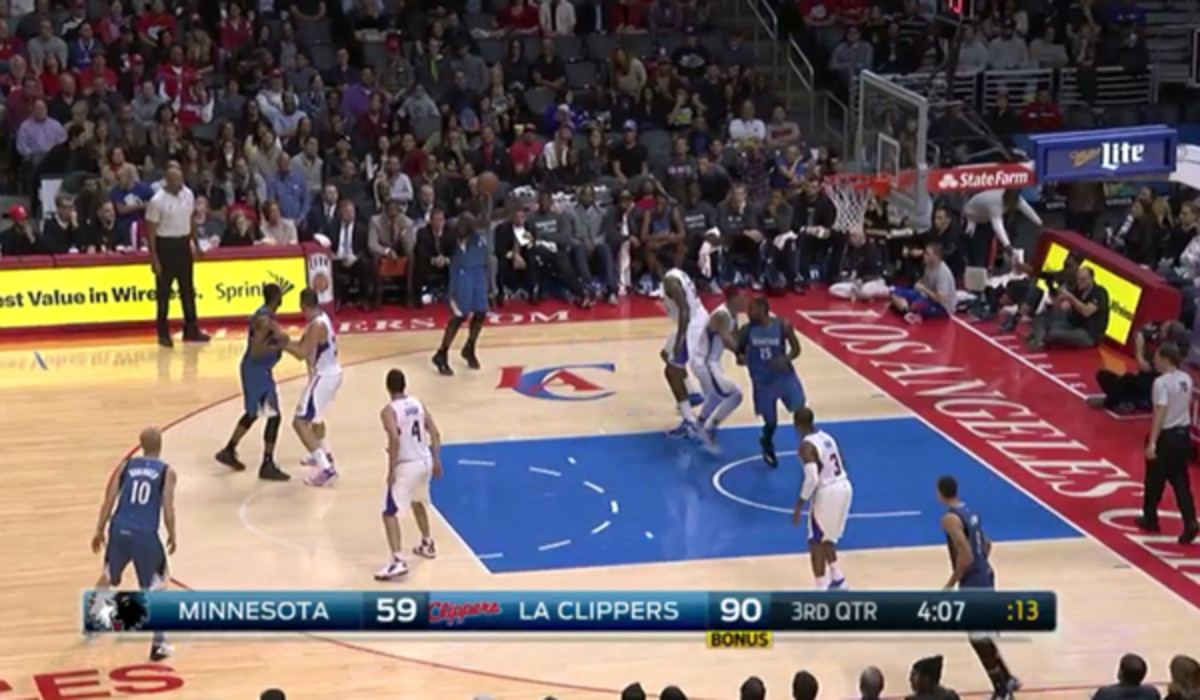
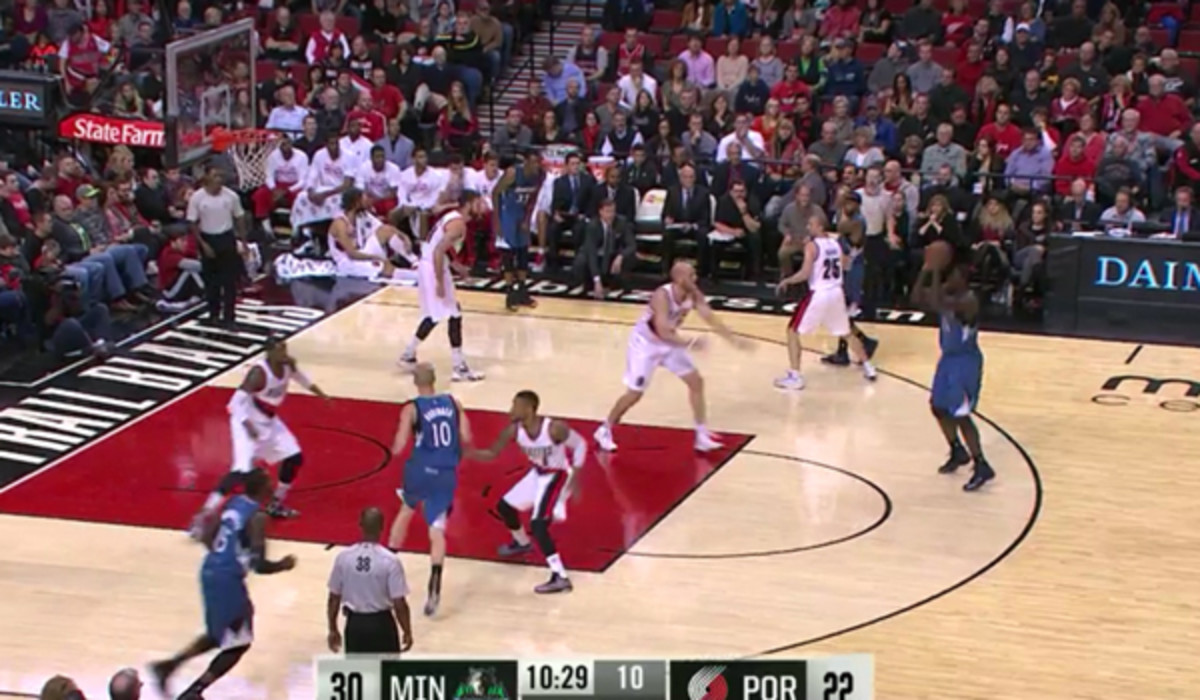
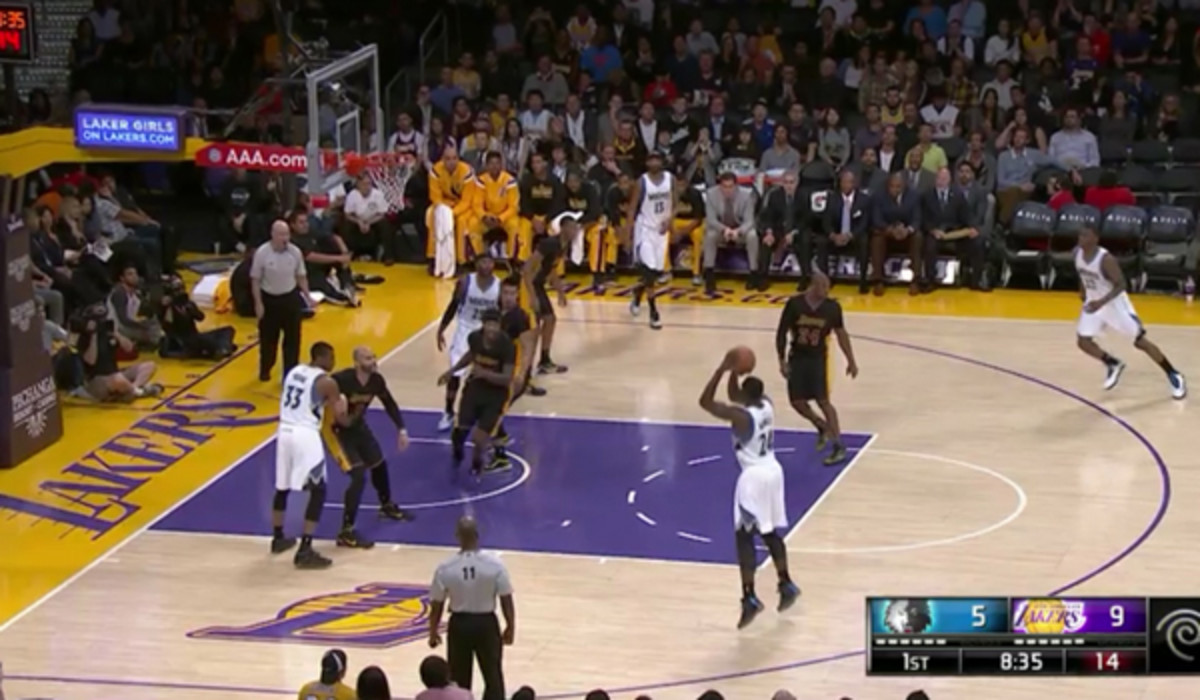
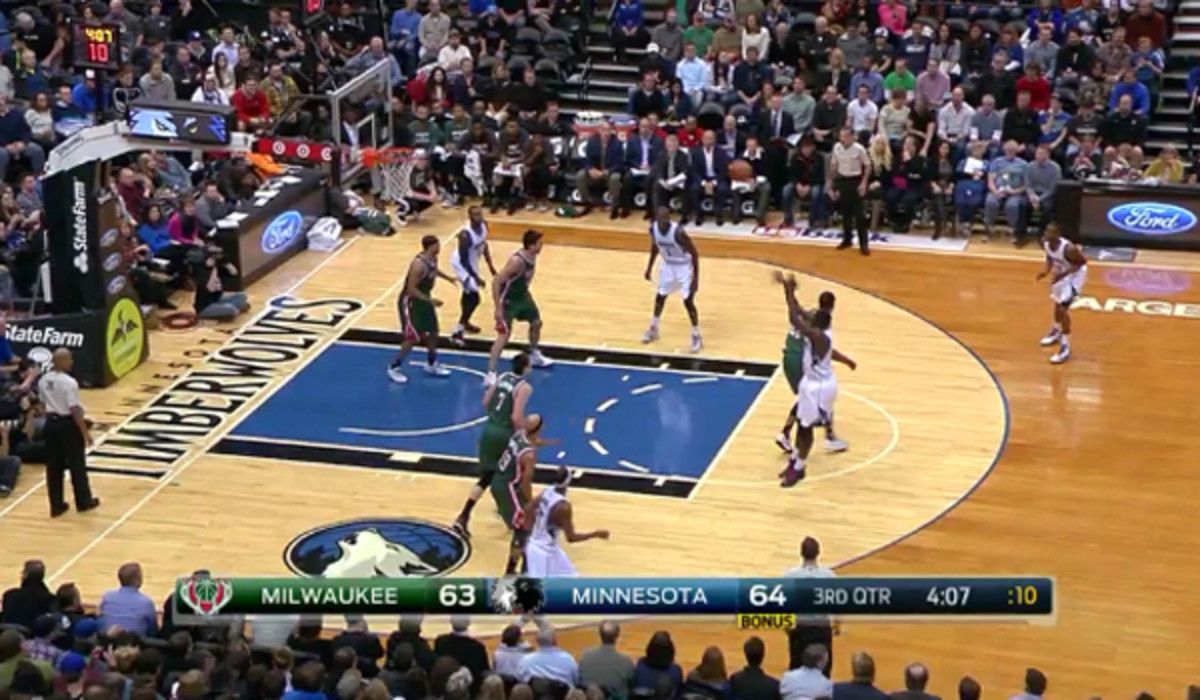
Even with defenders gifting him open look after open look, and even with many of his opportunities coming in no-pressure garbage-time situations, Bennett connected on a measly 30.8% of his midrange shots. These bricks weren’t a minor annoyance, they were the centerpiece of his game: 53.5% of all of his attempts came on midrange shots, compared to just 7.7% on three-pointers.
This is frustrating for so many reasons: Saunders expressed an aversion to three-pointers at the beginning of last season, Minnesota went on to rank dead last in three-point attempts, and Bennett jacked a ton of very long twos from just inside the arc at the top of the key while at the same time attempting just six corner threes all season.
Here, a team’s poor general philosophy worked directly against the development of one of its young players. Any team with the slightest understanding of analytics, or even just arithmetic, would never let Bennett repeat this performance, choosing at the very least to trade a good chunk of his bad long jumpers (long twos) for better long jumpers (corner threes). If Bennett is picking and fading to set up most of his offense, anyway, he might as well be spacing toward a portion of the court that will actually draw some defensive attention and generate more valuable attempts.
• GOLLIVER: Top 50 NBA games for 2015–16 | VAULT: Bennett vs. Giannis
As ugly as Bennett’s shot distribution and performance charts are, his defensive tape is even worse. Needless to say, he didn’t accidentally stumble into his horrific 113.2 defensive rating, as it was directly influenced by his stumbling through countless pick-and-rolls and awkward closeouts. Indeed, it’s possible to imagine Bennett as a stretch four on offense, at least if you squint. It’s much harder to see his position defensively.
Crucially, Bennett trusts his feet less than most people trust door-to-door solicitors. That’s a big, easily exploitable issue because he is usually stuck chasing perimeter-minded big men through high screens or showing hard on guards outside the three-point line, as Minnesota often asked him to do. Despite the weight loss, he just doesn’t move well laterally, even against attackers who start from a standstill.
Other weaknesses compound this core problem. Bennett is prone to leaving his feet in response to fakes. He isn’t long or imposing enough to remain in the paint while leaving the chasing to another big. He doesn’t compensate for his physical limitations through headiness or high-effort overachieving.
Guards generally waste little time putting Bennett into pick-and-rolls, and they practically lick their lips once he switches. In some cases, they don’t even really need to turn the corner on him to get to the hoop. They can just walk down the middle of the street.
In other cases, they are able to generate clean step-back looks knowing that Bennett will be back on his heels, ceding space.
Again, Minnesota wasn’t doing him any favors. It’s tough to watch tape of Bennett showing hard on a guard 30 feet from the hoop and then running into his own teammate as he tries to recover back to his own defensive assignment. It’s tough to watch him out on islands against talented scorers without meaningful help behind him. It’s tough to watch him survive two high pick-and-roll scenarios, only to die on the third because of miscommunication with his other young teammates.
Smarter teams would use him in a more conservative fashion defensively so as not to hang him out to dry repeatedly. They would also certainly try to protect his backside with a strong interior presence, as is the general custom for most defensively challenged perimeter fours.
But the blame game won’t help Bennett going forward. He needs to hold himself more accountable, and that means admitting that he was often passive, late to react and, in some cases, simply lazy last season.
There were far too many times when he looked like someone who hadn’t yet internalized the sobering fact that the NBA’s 30 GMs might simply move on without him, draft position be damned. Bennett’s next coach will need to be ready to offer many pieces of advice and points of correction, but “Wake up!” shouldn’t be one of them.
Bennett’s margin for error going forward is very slim, and he was wise to proactively free himself from the Timberwolves in search of greener pastures. Forecasting his best-case scenario is tricky. It’s difficult to see him ever being able to defend the small forward position at anything close to a replacement level, and his lack of playmaking ability makes it even harder to stuff him in as a three. Asking him to hold his own on the block, as a traditional four, is a tougher sell now that he’s lost weight and isn’t playing against high schoolers. Trying to use him as a five, in smaller lineups, would be an invitation for opponents to compile uncontested layups and dunks.
By process of elimination, that makes him a stretch four, almost certainly in a reserve capacity. Bennett could get there, but he will need to develop a reliable three-point stroke, substantially better defensive footwork, and—most importantly—a consistent motor that will allow him to become an energetic presence who makes use of his physical gifts, rather than a pedestrian. Absent any one of those improvements, and Bennett’s twisting NBA journey could soon be headed off a cliff.
Photos: The biggest draft busts in NBA history
Biggest NBA Draft Busts Of All Time
Anthony Bennett, Cavaliers | No. 1 pick, 2013
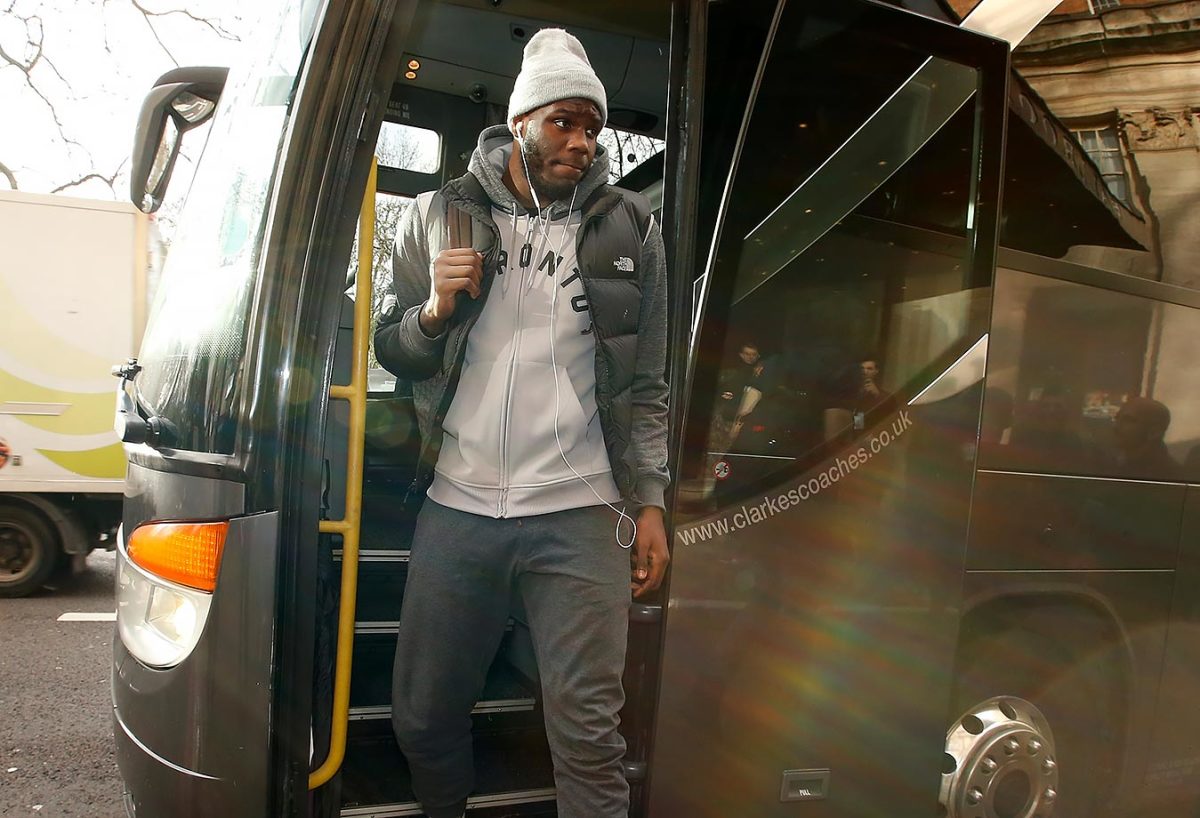
After burning out in both Cleveland and Minnesota in just two years, Bennett hardly logged any minutes in Toronto when the Raptors waived him on Feb. 29, 2016. The No. 1 overall pick, who was recently dropped by the Nets, owns averages of 4.4 points and 3.1 rebounds in just 12.6 minutes per game.
Hasheem Thabeet, Grizzlies | No. 2 pick, 2009
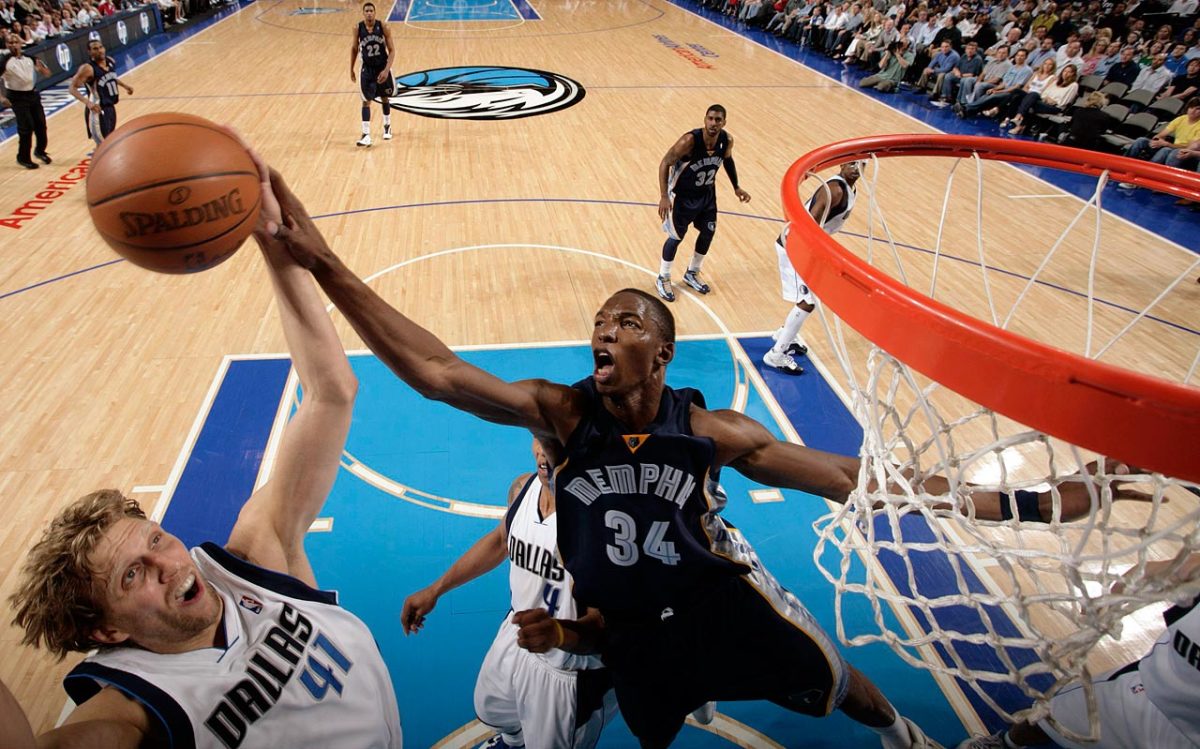
Thabeet has already been passed from Memphis to Houston to Portland to Oklahoma City. The former UConn center was always thought to be a long-term project, but he's yet to develop into a solid NBA center. He has career averages of 2.2 points and 2.7 rebounds in 10.5 minutes.
Joe Alexander, Bucks | No. 8 pick, 2008
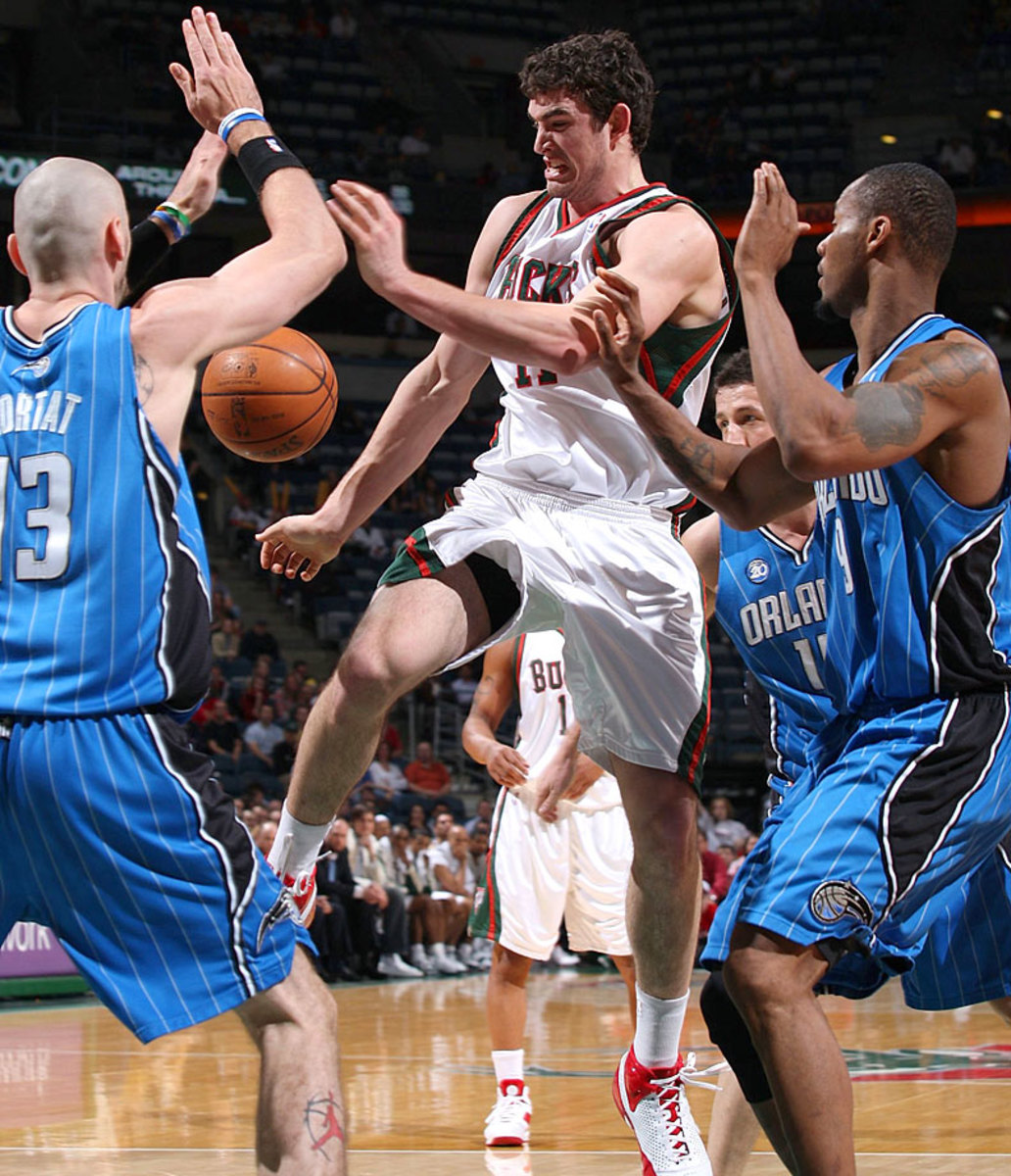
Alexander hasn't played in the NBA since 2010 (he was in Warriors camp in 2013) after averaging 4.2 points in 67 games. Ryan Anderson, Serge Ibaka and Nicolas Batum were among the fellow forwards who were taken after Alexander in the first round.
Greg Oden, Trail Blazers | No. 1 pick, 2007
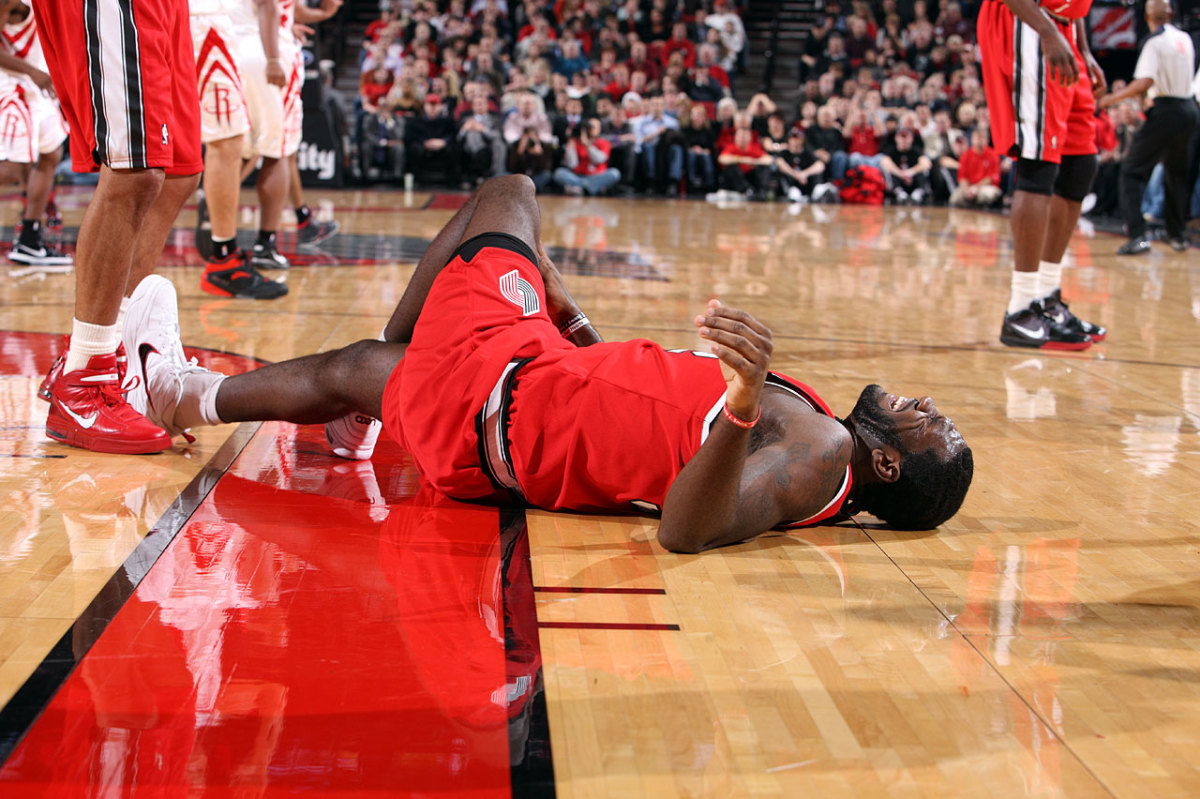
"I know I'm one of the biggest busts in NBA history and I know that it'll only get worse as Kevin Durant continues doing big things ... It's frustrating that my body can't do what my mind wants it to do sometimes. But worrying or complaining about it isn't going to fix anything," said Oden. After being released by the Blazers in March 2012, Oden spent the entire 2012-13 season rehabilitating from multiple knee surgeries. He last played, sparingly, with the Heat in 2014.
Adam Morrison, Bobcats | No. 3 pick, 2006
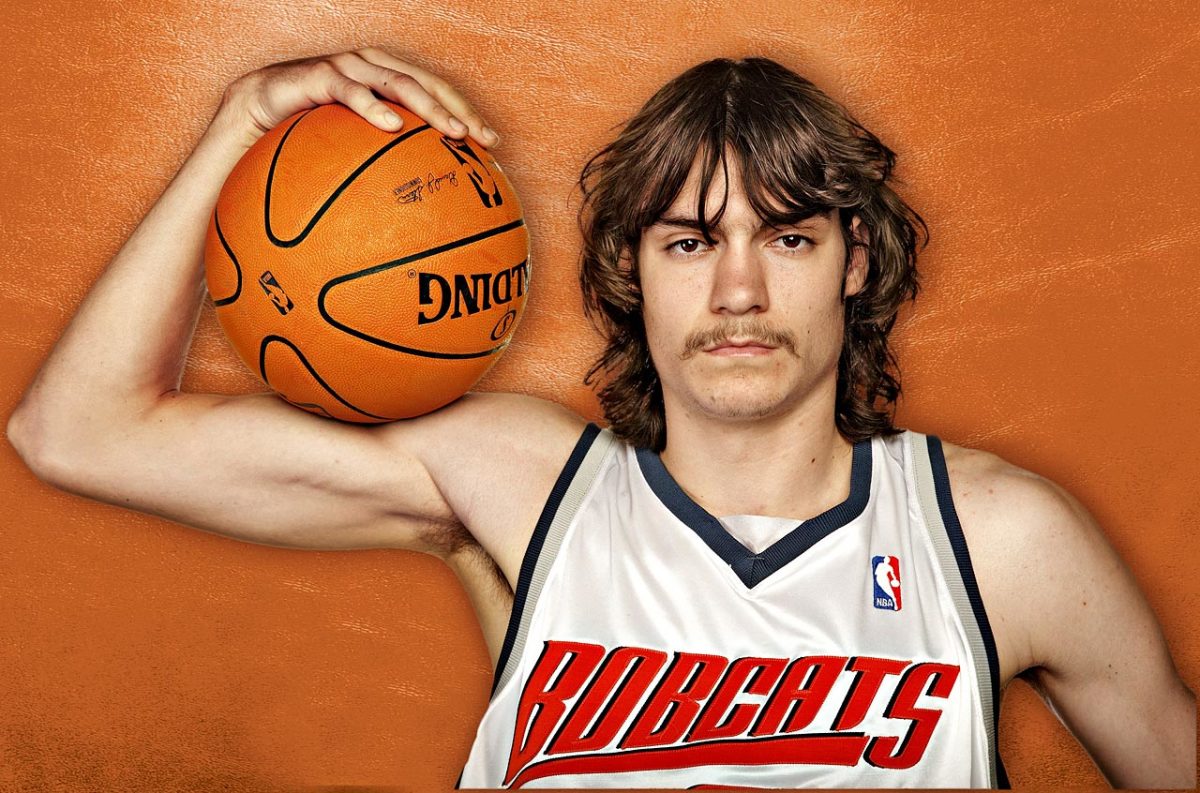
Five years after missing on Kwame Brown, Michael Jordan fared no better with Morrison. The former Gonzaga star averaged 11.8 points as a rookie but shot only 37.6 percent. He missed the next season with a knee injury, was traded to the Lakers in 2009 and quietly fell out of the league in 2010.
Fran Vazquez, Magic | No. 11 pick, 2005
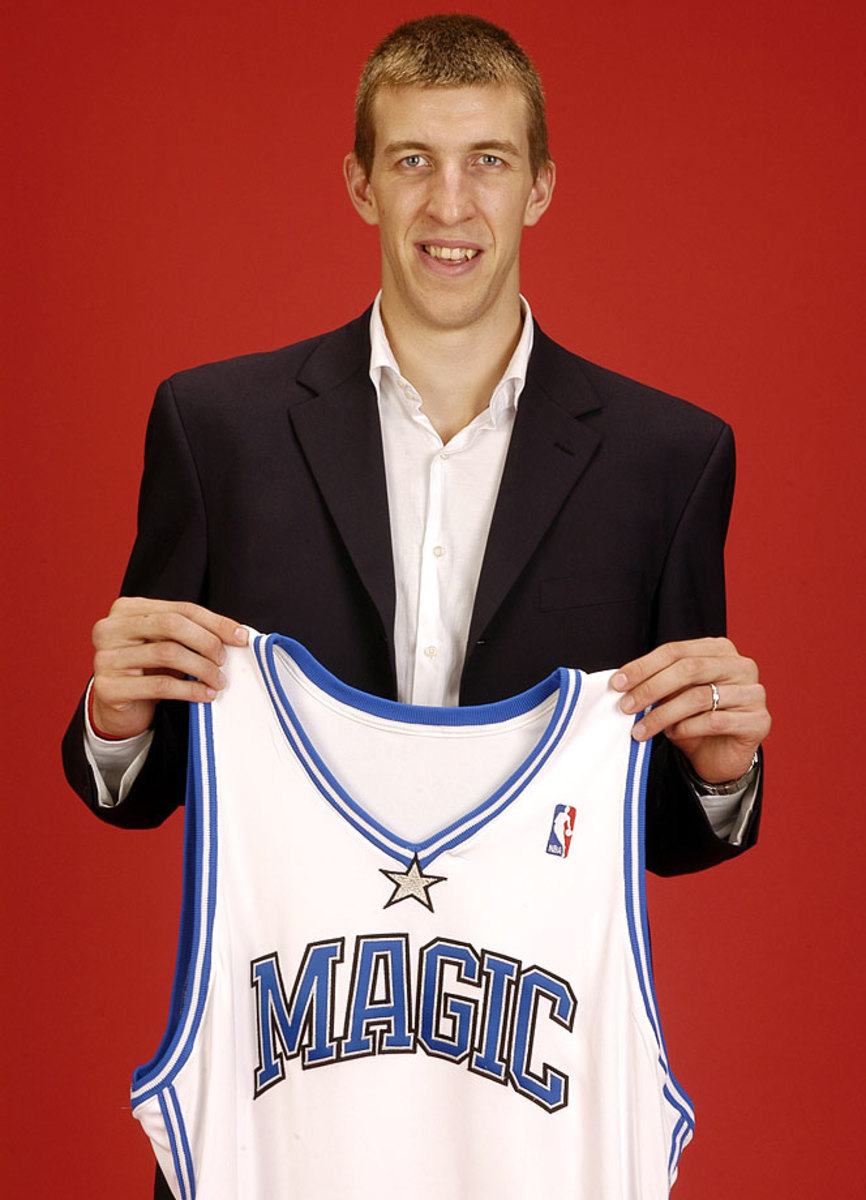
This isn't about the Spanish big man's NBA body of work — after all, there is none. It's about the fact that Orlando used a valuable lottery pick on a player who hasn't even suited up for them. Vazquez is now 31 with over a decade under his belt in the Spanish league.
Rafael Araujo, Raptors | No. 8 pick, 2004
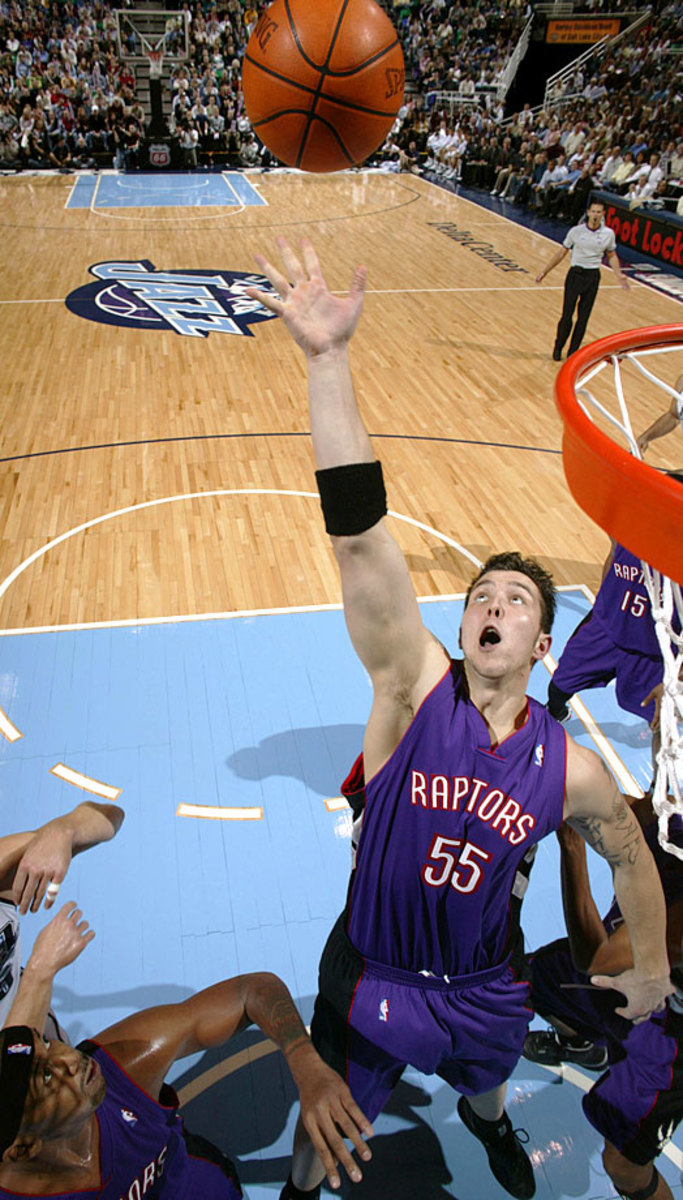
He went about 10 spots higher than was expected, and about 25 spots higher than was deserved. The 6-11 center from BYU was a three-year washout in the NBA.
Darko Milicic, Pistons | No. 2 pick, 2003
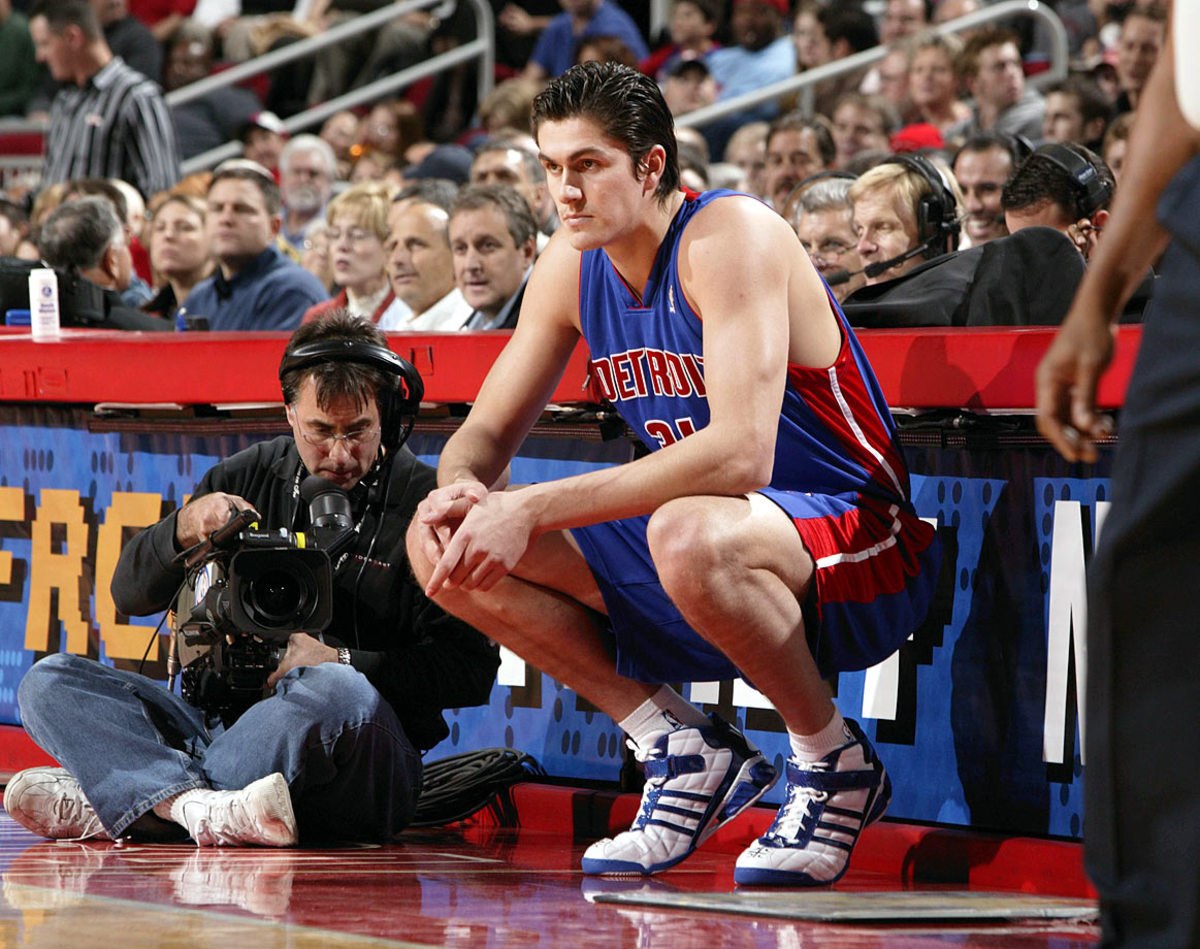
LeBron James, Milicic, Carmelo Anthony, Chris Bosh and Dwyane Wade — which top five pick from 2003 doesn't belong? In fairness, the 28-year-old Milicic showed flashes of strong play. But overall, in 10 seasons Milicic averaged 6.0 points and 4.2 rebounds while playing for six teams; he did not play in the NBA in 2013-14. Joe Dumars and the Pistons whiffed on this one.
Nikoloz Tskitishvili, Nuggets | No. 5 pick, 2002
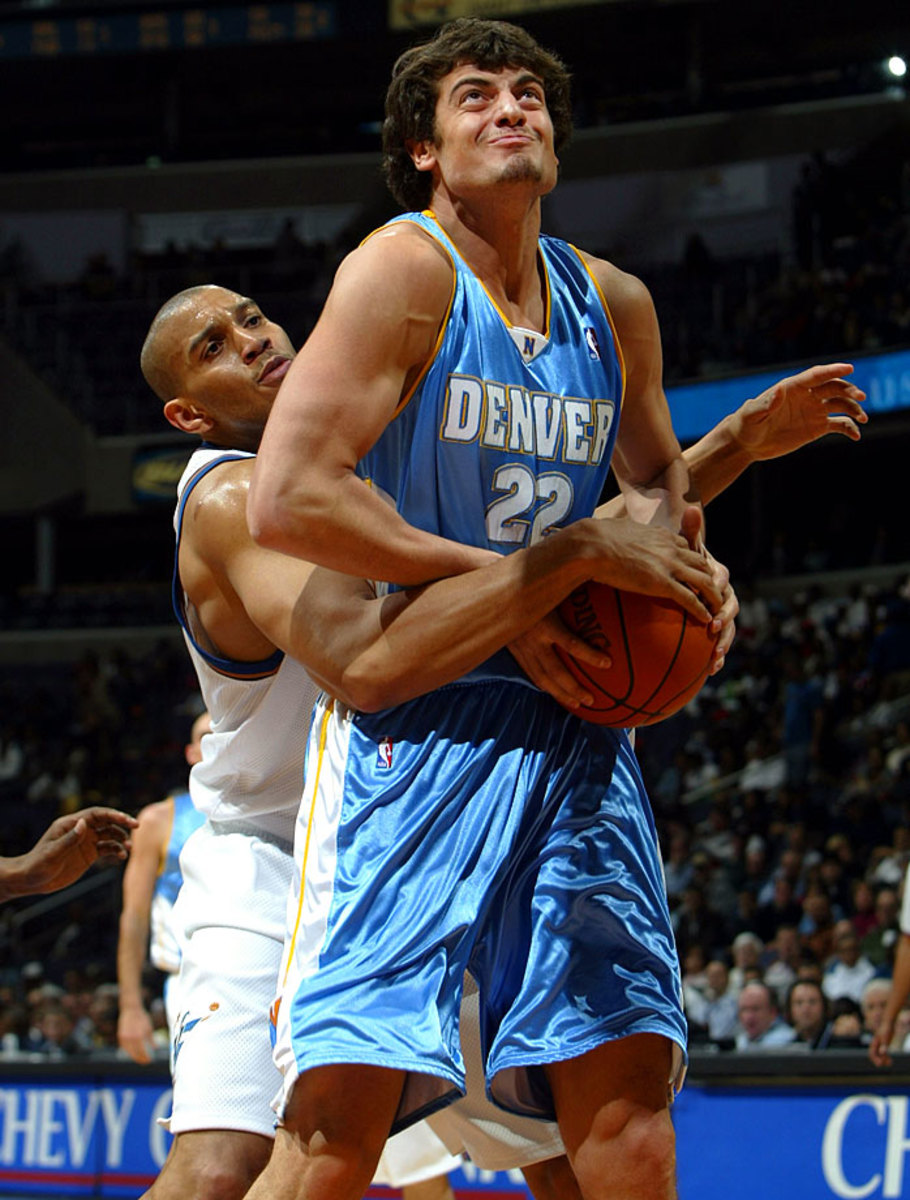
Skita created a buzz with his predraft workouts, and that was that. Four teams discarded him in four seasons. Then-GM Kiki Vandeweghe and the Nuggets did better with the other 19-year-old they acquired two picks later: Nene.
Kwame Brown, Wizards | No. 1 pick, 2001
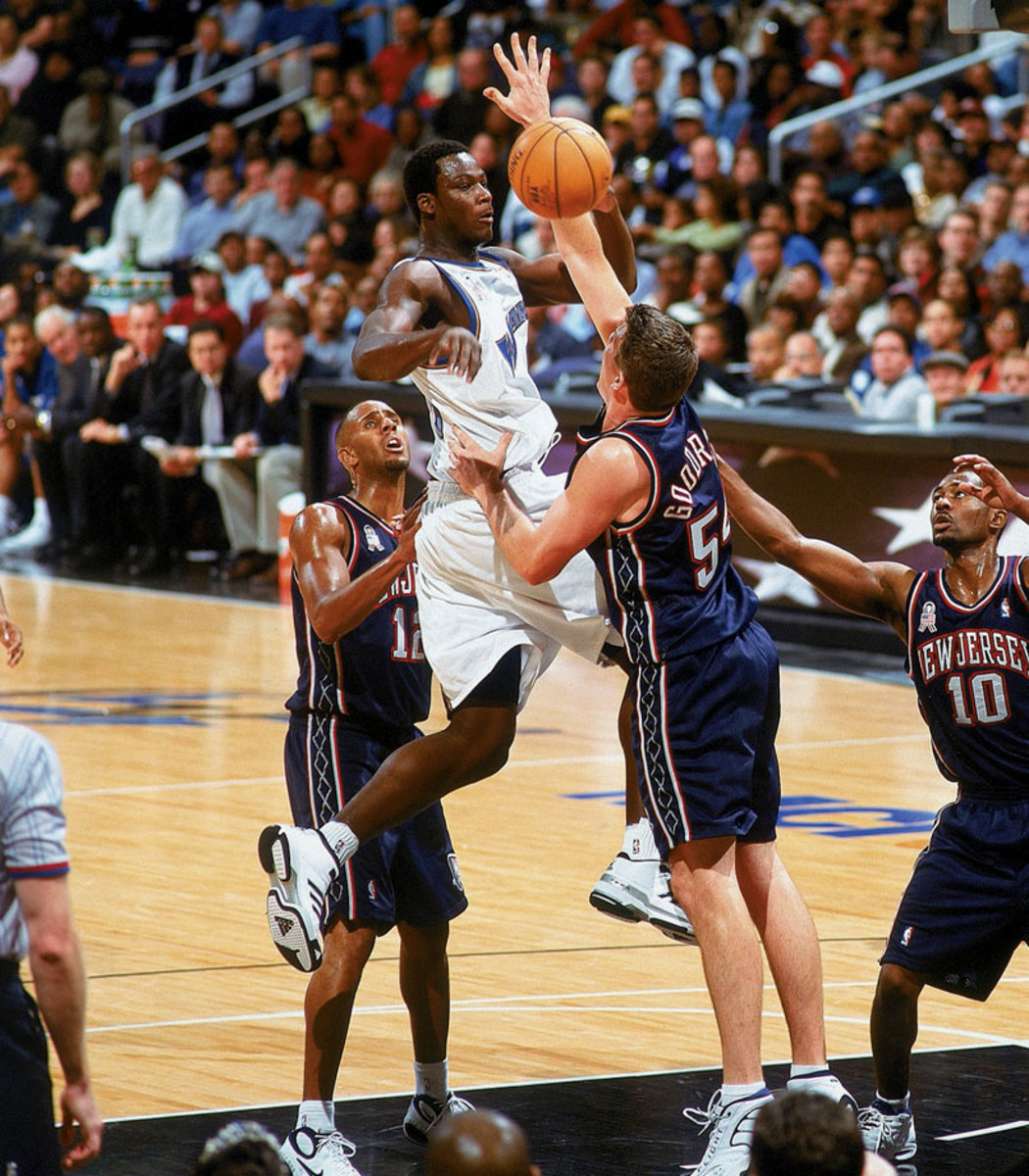
Michael Jordan's handpicked choice played for seven teams in 12 seasons and sports career averages of 6.6 points and 5.5 rebounds. Brown, however, did experience something of a rebirth after reuniting with Jordan in Charlotte in 2010-11, when the 6-11 center averaged 9.4 points and 7.0 rebounds. Those were his best numbers since 2006-07. He was hurt for most of 2011-12 after signing with Golden State and played limited minutes with Philadelphia in 2012-13 before being waived in November 2013.
2000 first round
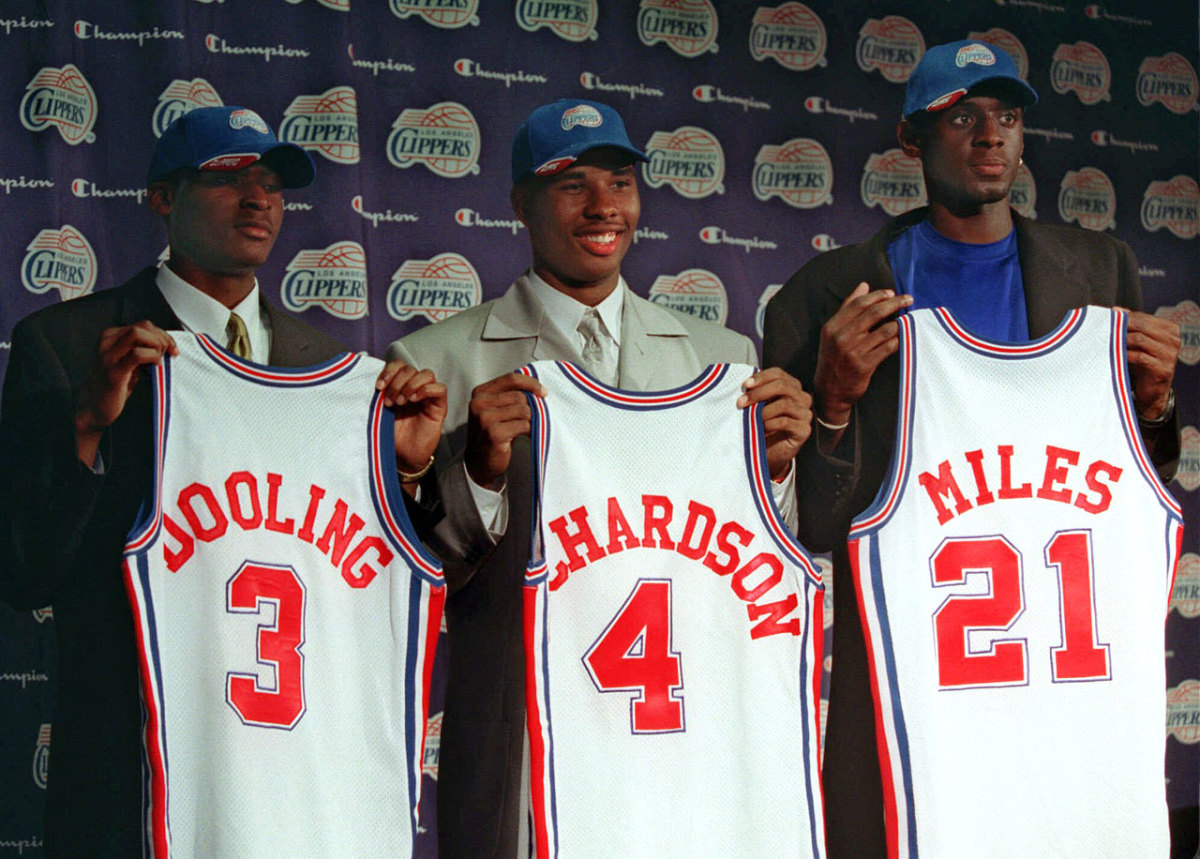
Most of the GMs in '00 got their picks right; this was just a bad group of players. Here was the top half of the first round: Kenyon Martin, Stromile Swift, Darius Miles, Marcus Fizer, Mike Miller, DerMarr Johnson, Chris Mihm, Jamal Crawford, Joel Przybilla, Keyon Dooling, Jerome Moiso, Etan Thomas, Courtney Alexander, Mateen Cleaves and Jason Collier. Particularly unfortunate for the Clippers, who wound up with three of the top 18 picks.
Jonathan Bender, Pacers (via Raptors) | No. 5 pick, 1999
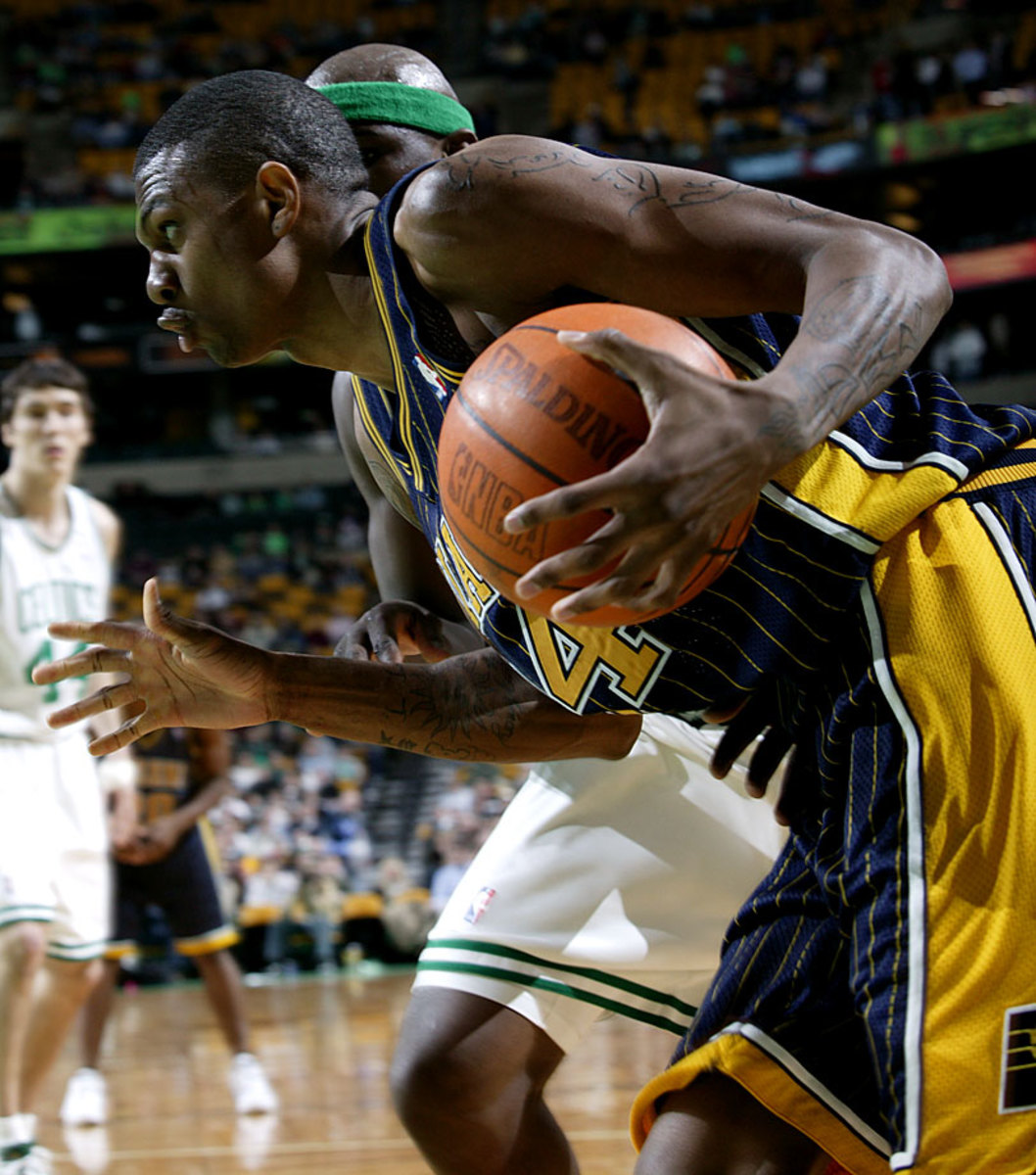
Indiana acquired the draft rights to the preps-to-pros, Kevin-Garnett look-alike for solid big man Antonio Davis. Bender showed tantalizing flashes of his potential but never put it together before cutting short his career because of knee injuries in February 2006. Bender had a 25-game comeback with the Knicks in 2009-2010.
Michael Olowokandi, Clippers | No. 1 pick, 1998
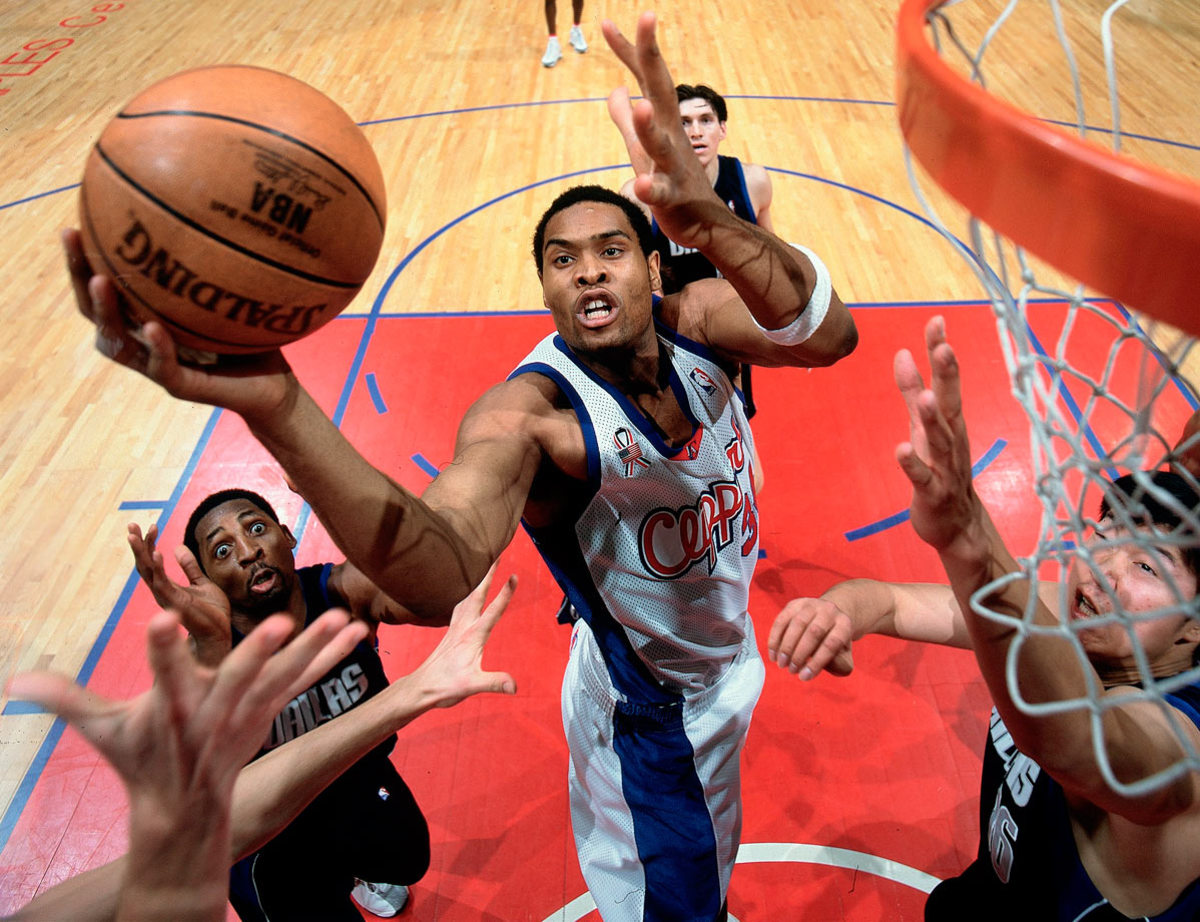
Bust-worthy on so many levels. The Kandi Man was taken before future All-Stars Antawn Jamison, Vince Carter, Dirk Nowitzki and Paul Pierce and a host of more suitable selections. Even the final pick of the first round, Nazr Mohammed, has had a much more distinguished career in the pivot.
Robert Traylor, Bucks (via Mavs) | No. 6 pick, 1998
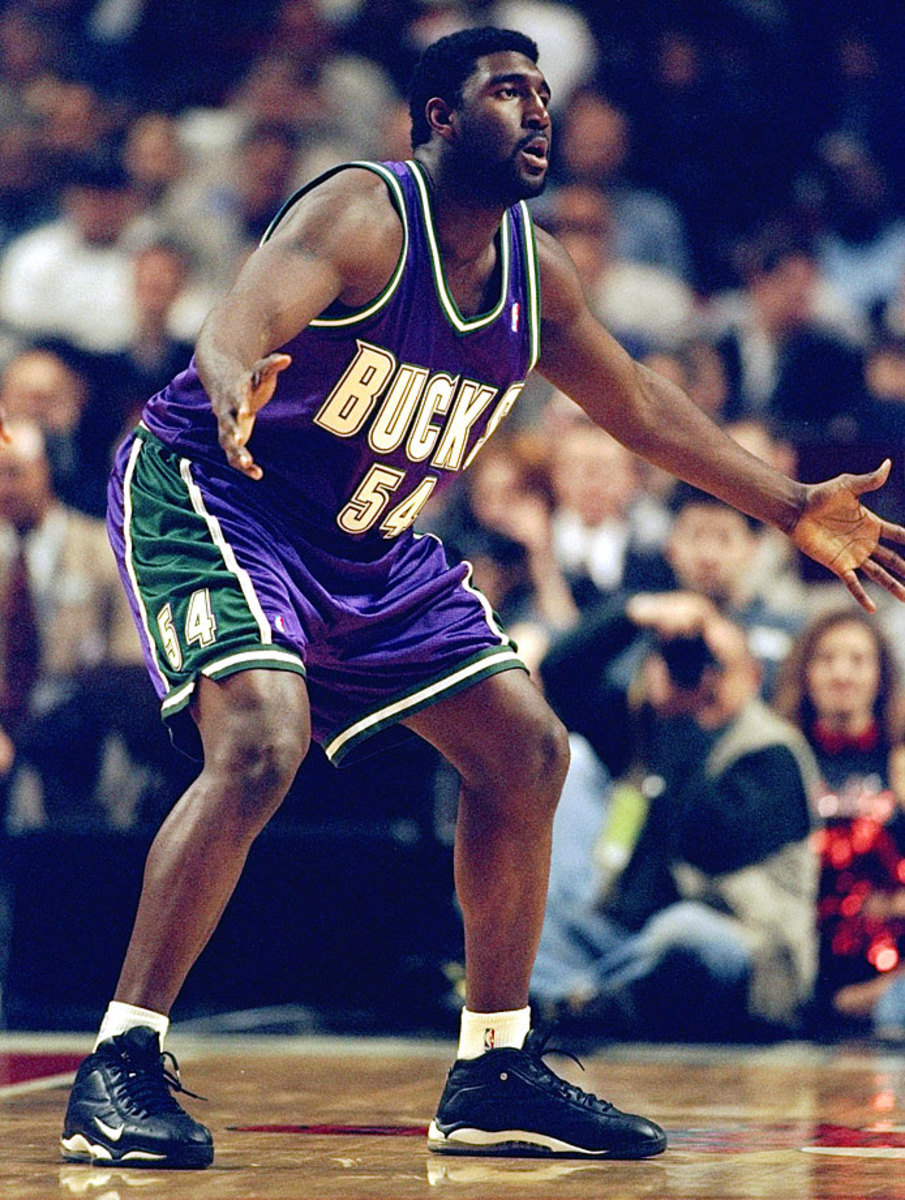
In a prearranged draft-night trade that turned into one of the most lopsided deals in history, the Mavericks sent Traylor to the Bucks for Dirk Nowitzki and Pat Garrity, whom Dallas dealt to Phoenix for Steve Nash. Nowitzki was named MVP in 2007 and led the Mavs to the 2011 title with an epic postseason performance. Meanwhile, the Tractor averaged 4.8 points and 3.7 rebounds in seven seasons.
Joe Smith, Warriors | No. 1 pick, 1995
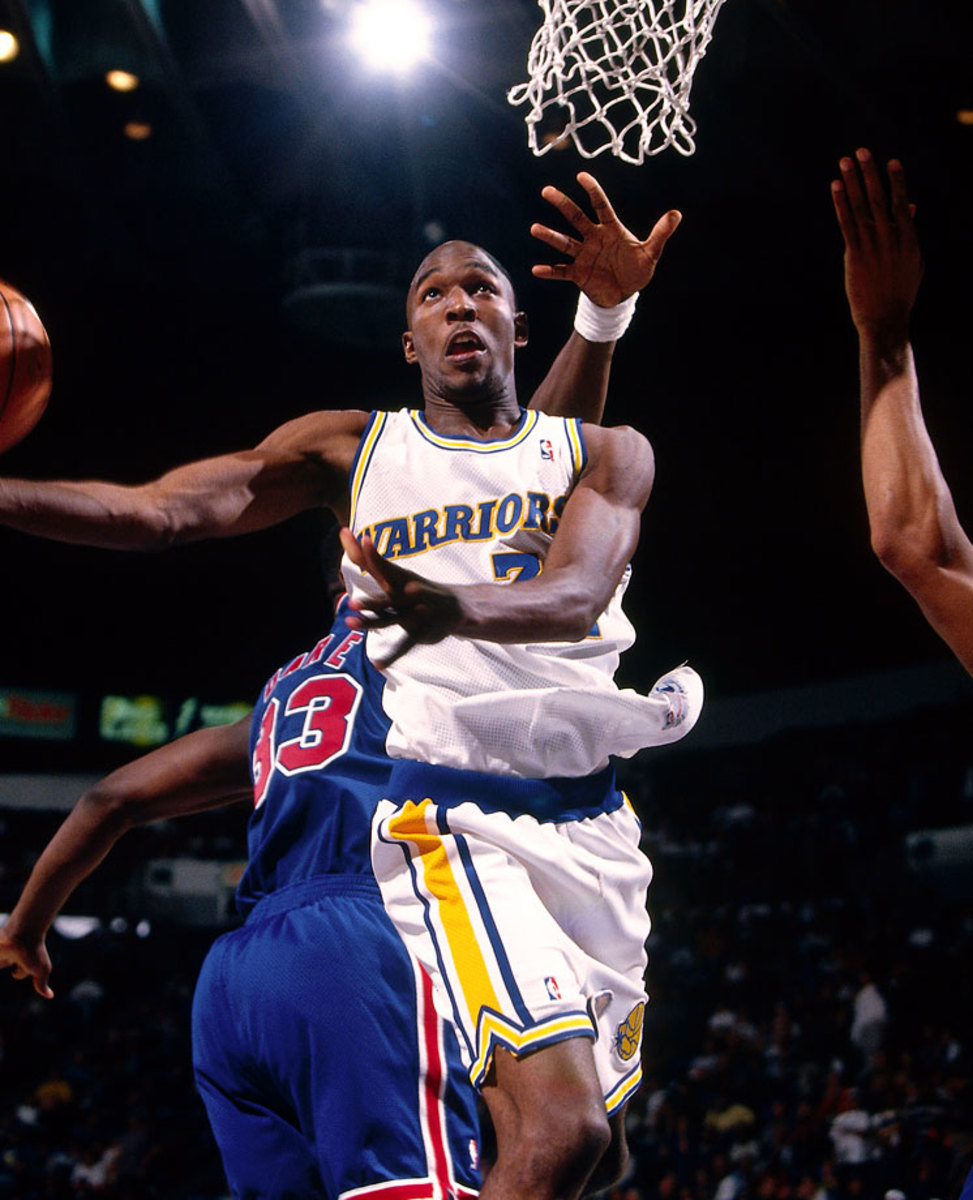
Average in name and game, Smith was serviceable while playing for 12 teams over 16 years, but later selections Antonio McDyess, Jerry Stackhouse, Rasheed Wallace and (especially) Kevin Garnett enjoyed better careers.
Ed O'Bannon, Nets | No. 9 pick, 1995
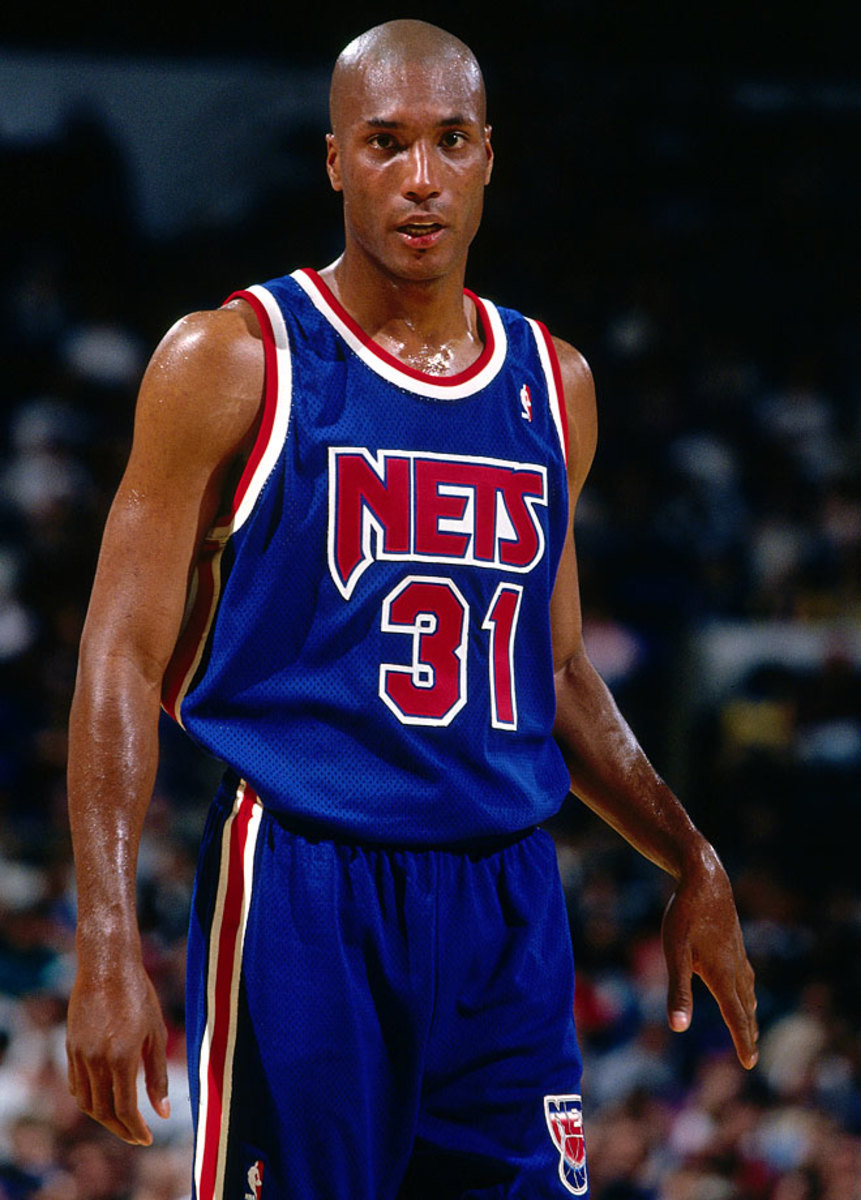
The older and better of the brothers who led UCLA to an NCAA championship in 1995, O'Bannon is the perfect example of a player who had multiple talents but none that rose to an NBA level. He lasted only two seasons, playing with the Nets and Mavericks.
Shawn Bradley, 76ers | No. 2 pick, 1993
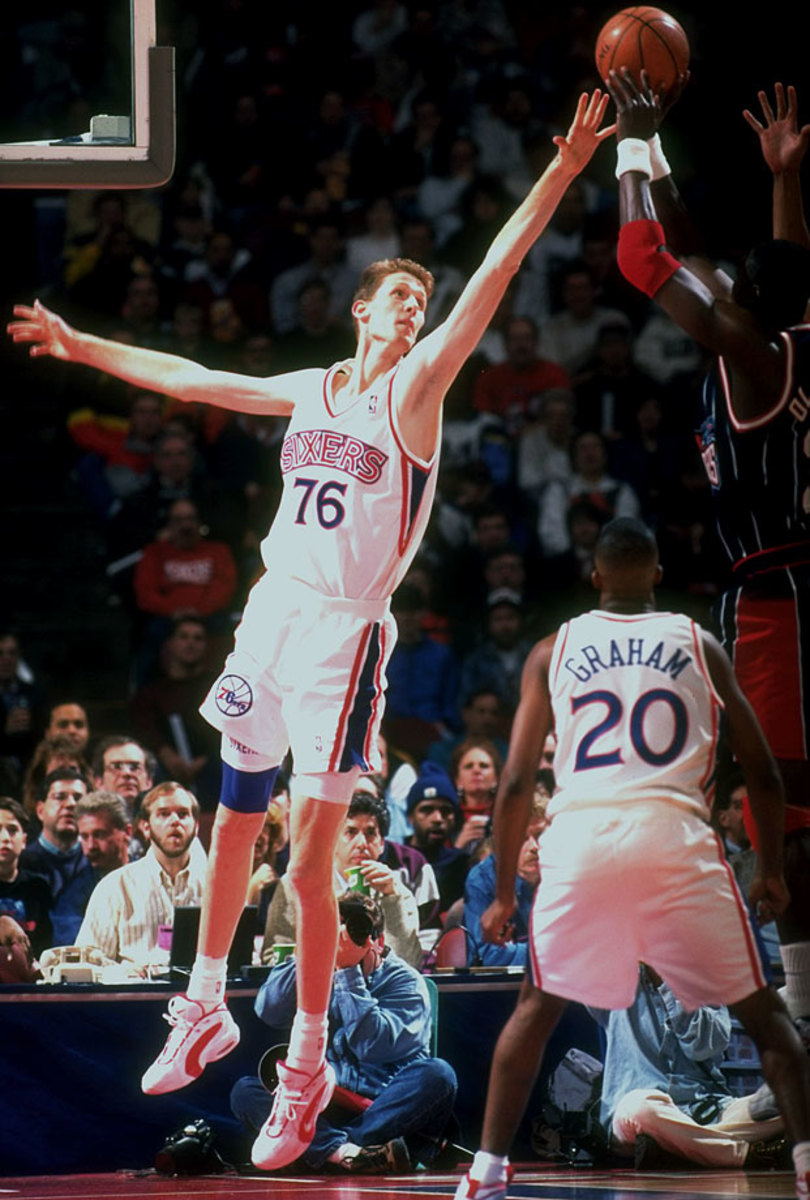
Find him on a poster near you. To his credit, Bradley developed into a so-so big man who ranks 14th on the all-time list in blocks. He's the perfect example of a player whose draft position colors the perception of his career.
Bo Kimble, Clippers | No. 8 pick, 1990
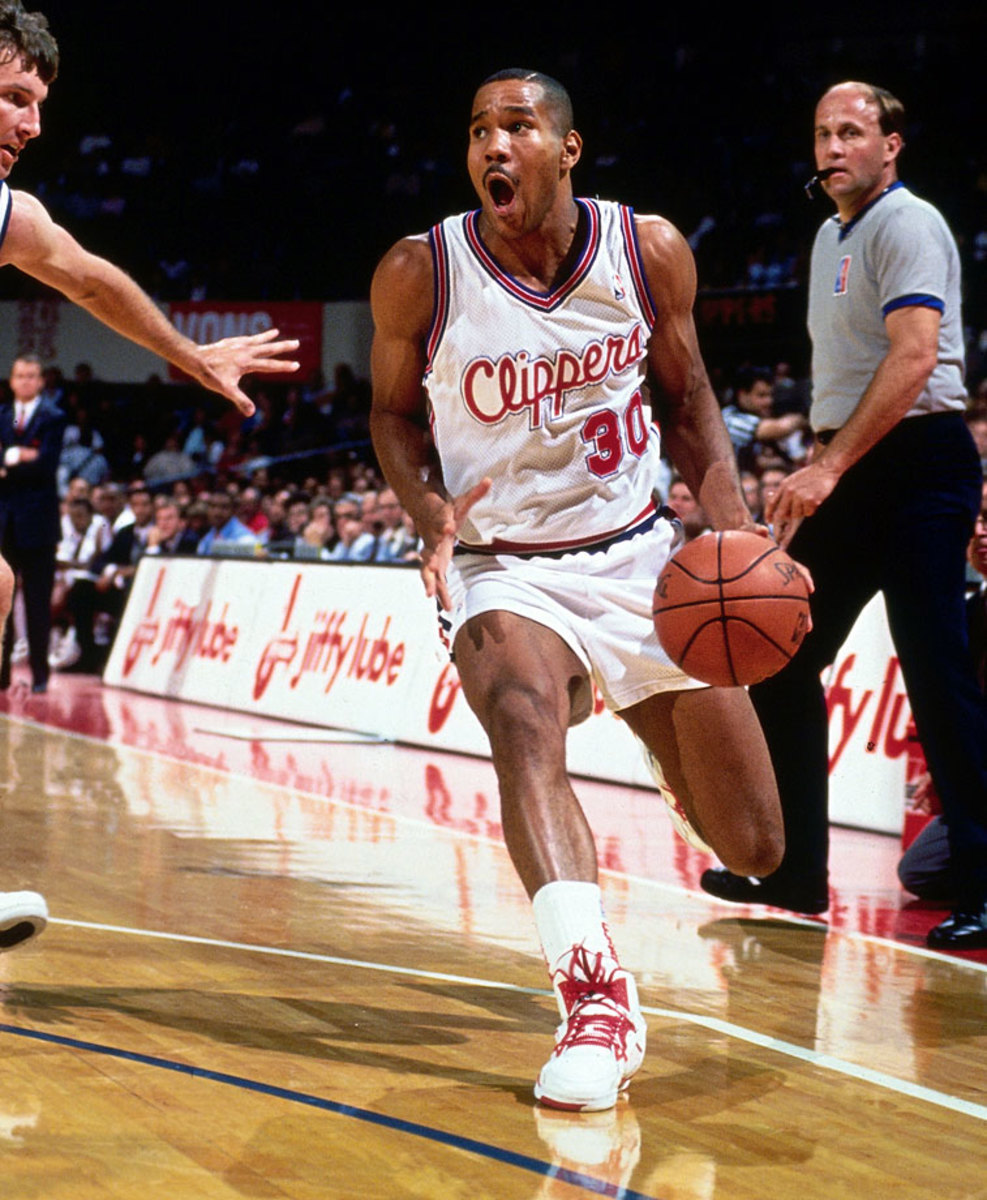
A high-scoring, high-profile college star at Loyola Marymount, Kimble was out of the league after 105 NBA games split between the Clippers and Knicks.
Danny Ferry, Clippers | No. 2 pick, 1989
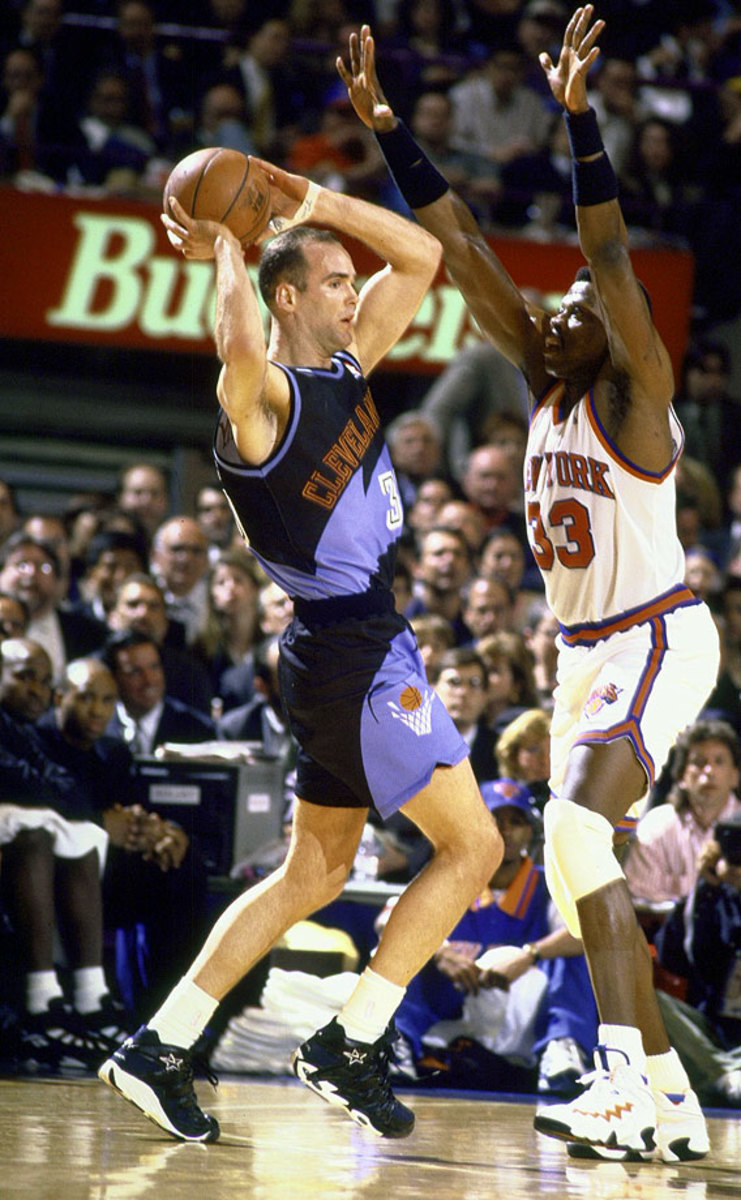
Ferry had no interest in playing for the Clippers so he toiled for a season in Italy before Los Angeles agreed to trade his rights. Well-respected Cavs GM Wayne Embry made one of the worst moves of his career by sending scoring machine Ron Harper to the Clippers for Ferry, who spent 10 nondescript seasons in Cleveland. (Incidentally, the player taken before Ferry, Pervis Ellison, makes many "bust" lists, though he did have a couple of strong seasons before injuries wrecked his career.)
Dennis Hopson, Nets | No. 3 pick, 1987
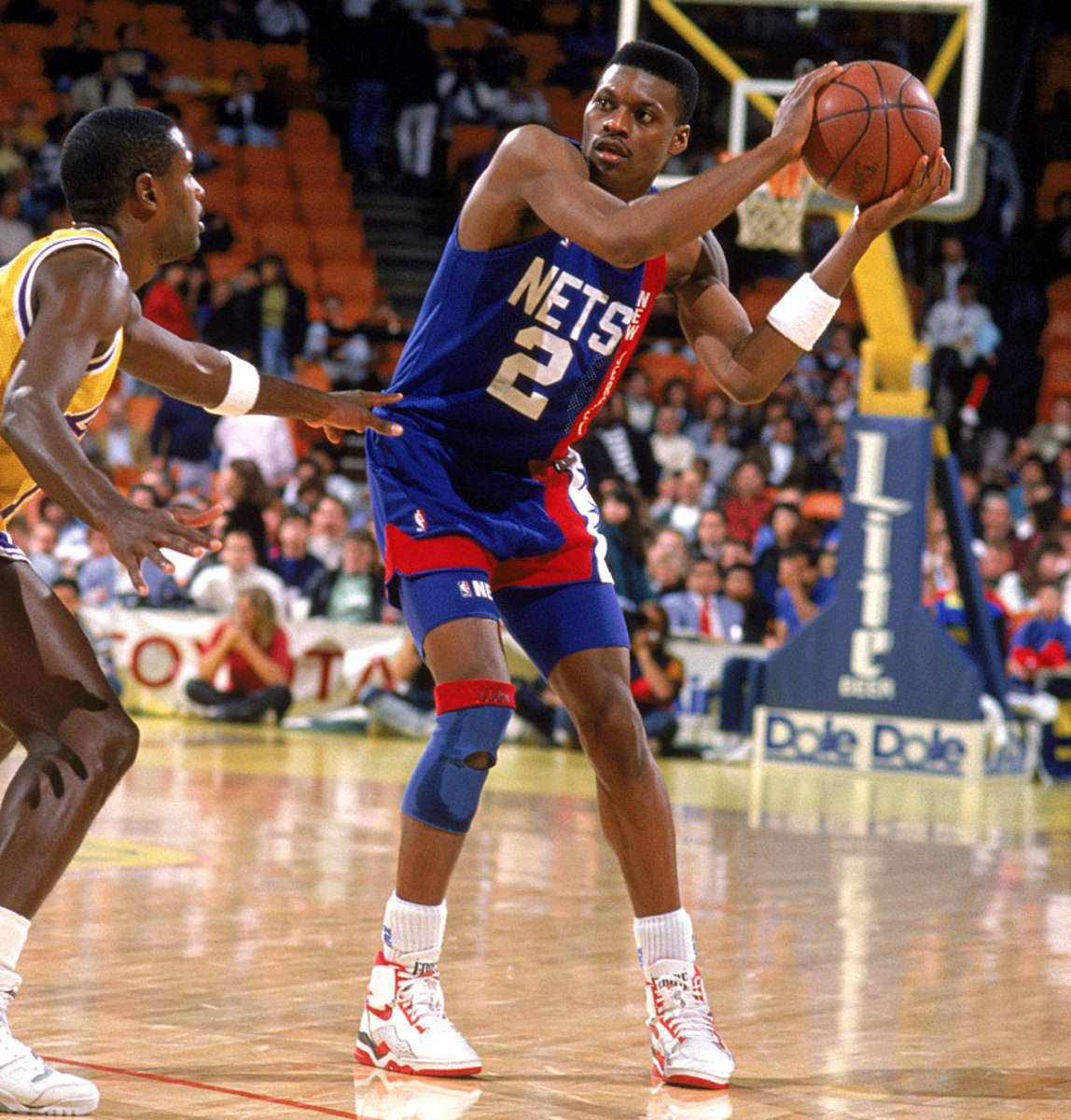
The first in a series of "Next Jordans" flamed out before producing a fraction of what MJ accomplished. Hopson averaged 10.9 points in five seasons.
Chris Washburn, Warriors | No. 3 pick, 1986
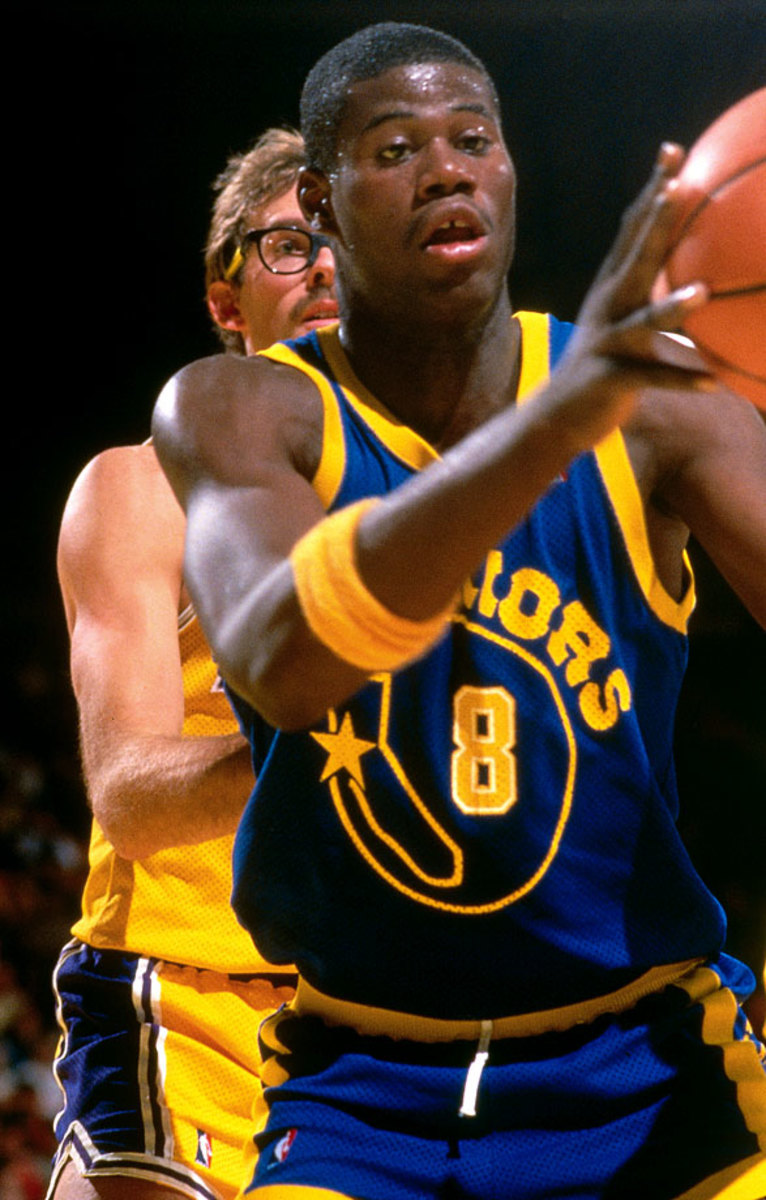
The North Carolina State product totaled 222 points in 72 career games, as good a representative as any for a draft full of busts.
Jon Koncak, Hawks | No. 5 pick and Joe Kleine, Kings | No. 6 pick, 1985
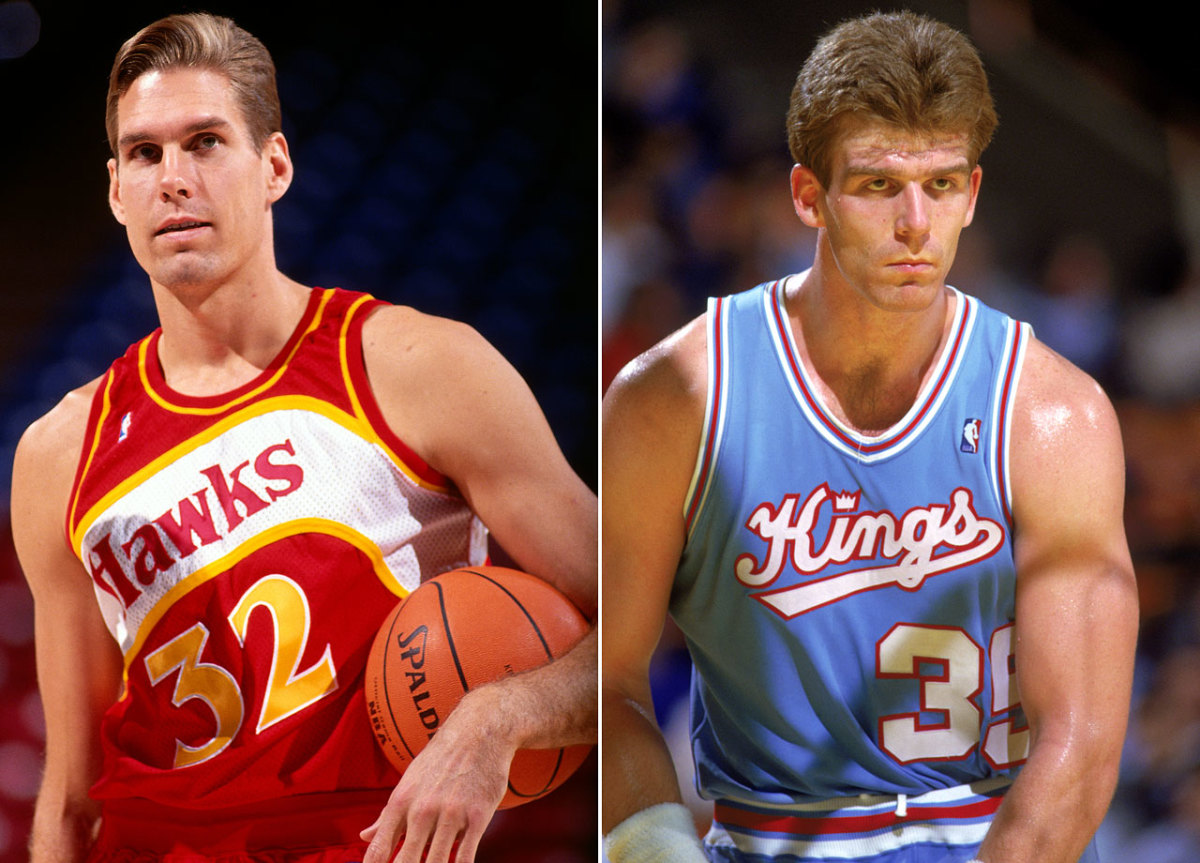
Koncak and Klein spent the bulk of their time in the NBA cashing in on their right to commit six fouls per game.
Sam Bowie, Trail Blazers | No. 2 pick, 1984
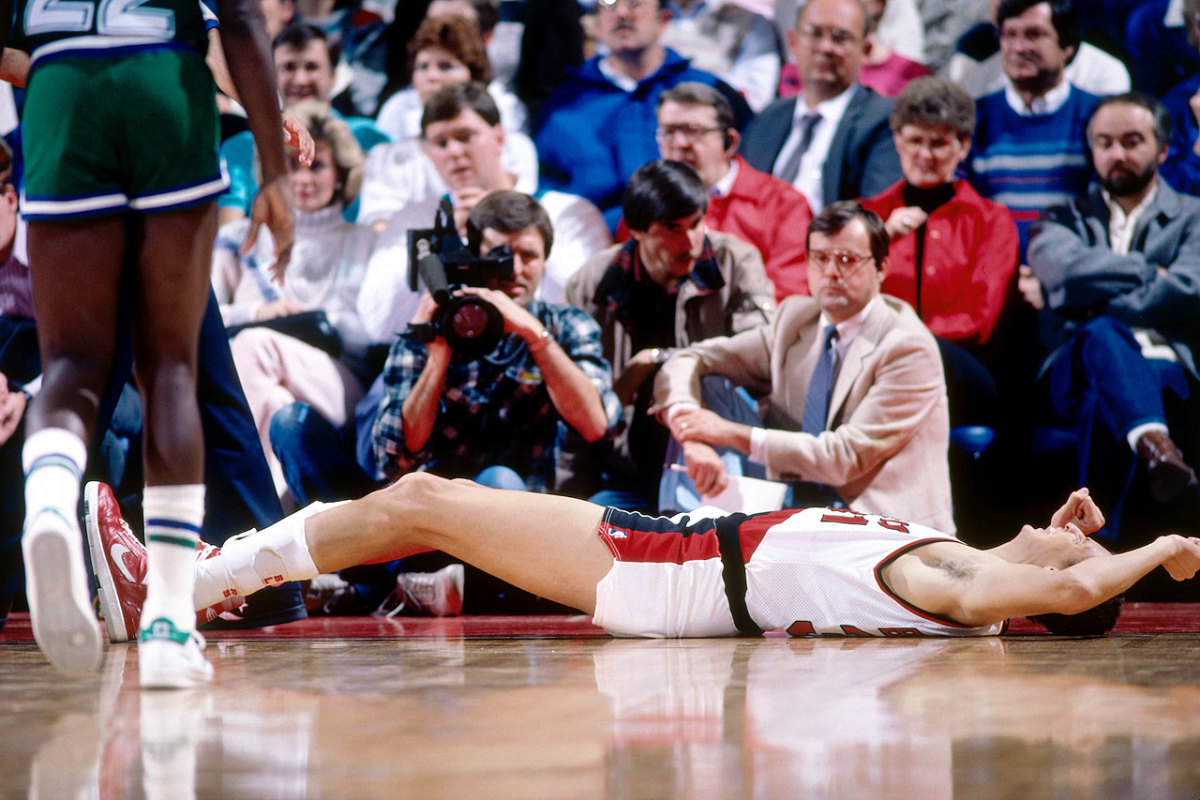
His selection underscores the cardinal rule behind NBA Draftology: You can't draft for need. The Blazers, flush with Jim Paxson and Clyde Drexler on the wings, needed a center and passed on drafting Michael Jordan, Charles Barkley and John Stockton. Bowie struggled with injuries throughout his 10-year run and finished with career averages of 10.9 points and 7.5 rebounds.
Bill Garnett, Mavericks | No. 4 pick, 1982
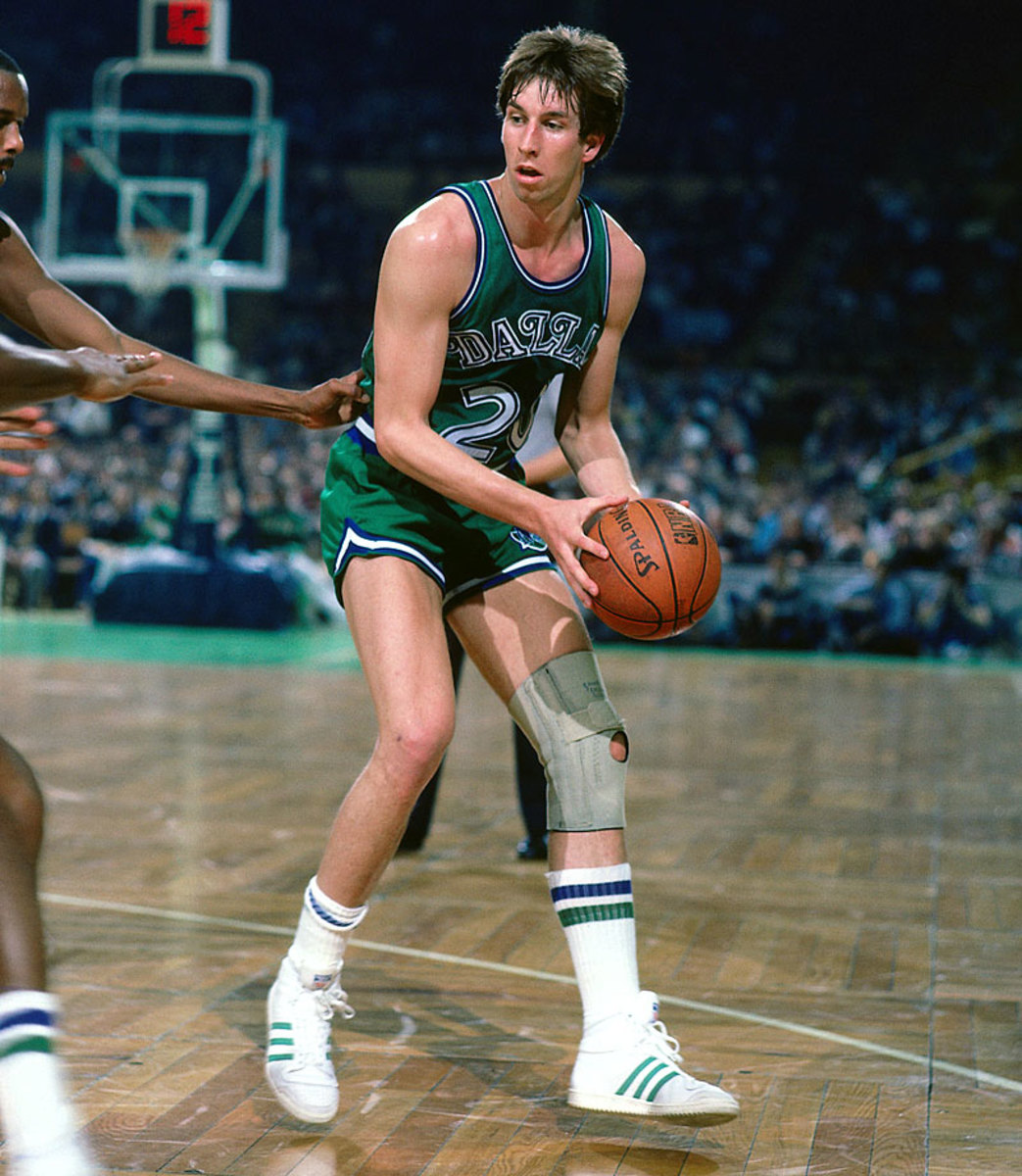
The former Wyoming star split four pedestrian seasons (5.5 points, 4.3 rebounds) between Dallas and Indiana.
Kent Benson, Bucks | No. 1 pick, 1977
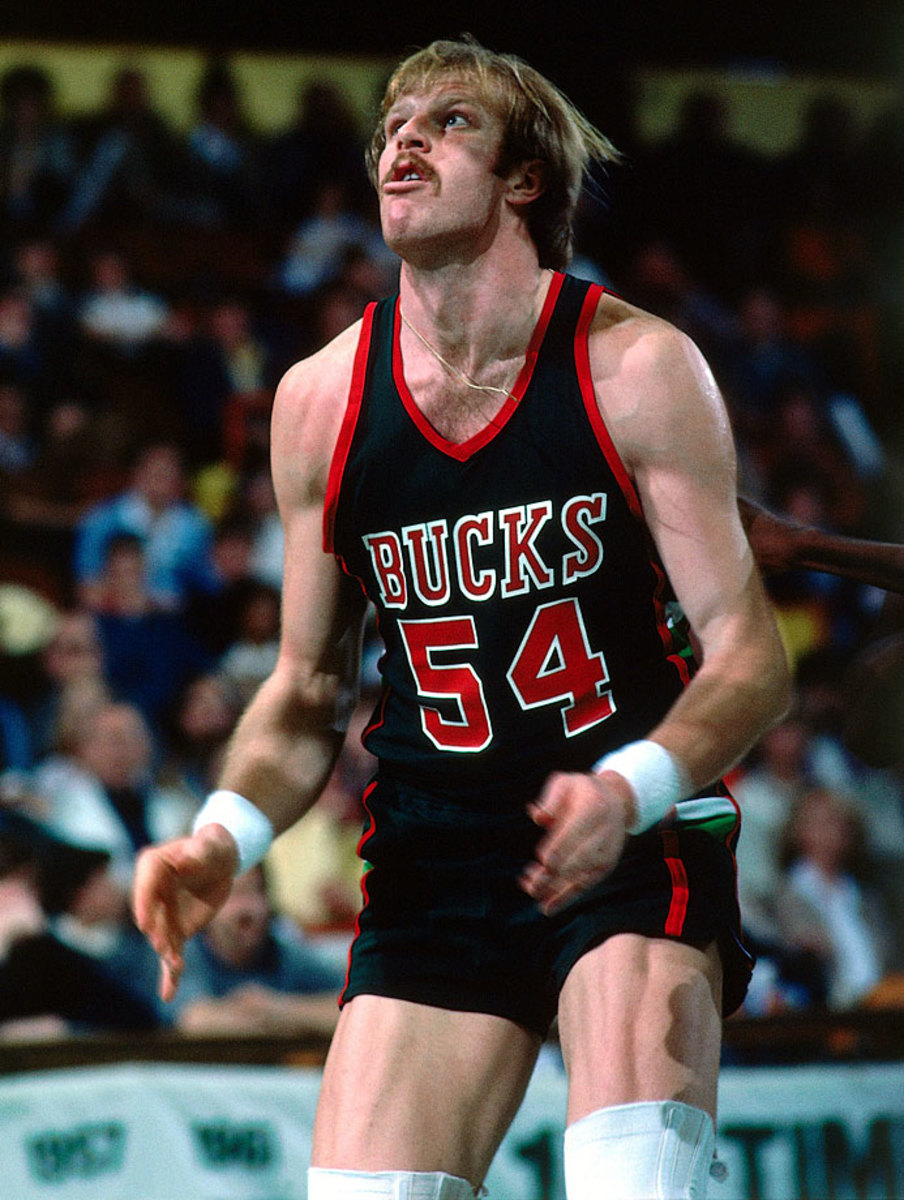
It never got better for Benson than winning the national title at Indiana. He did stick in the NBA for 10 seasons but produced only three double-digit scoring campaigns.
LaRue Martin, Trail Blazers | No. 1 pick, 1972
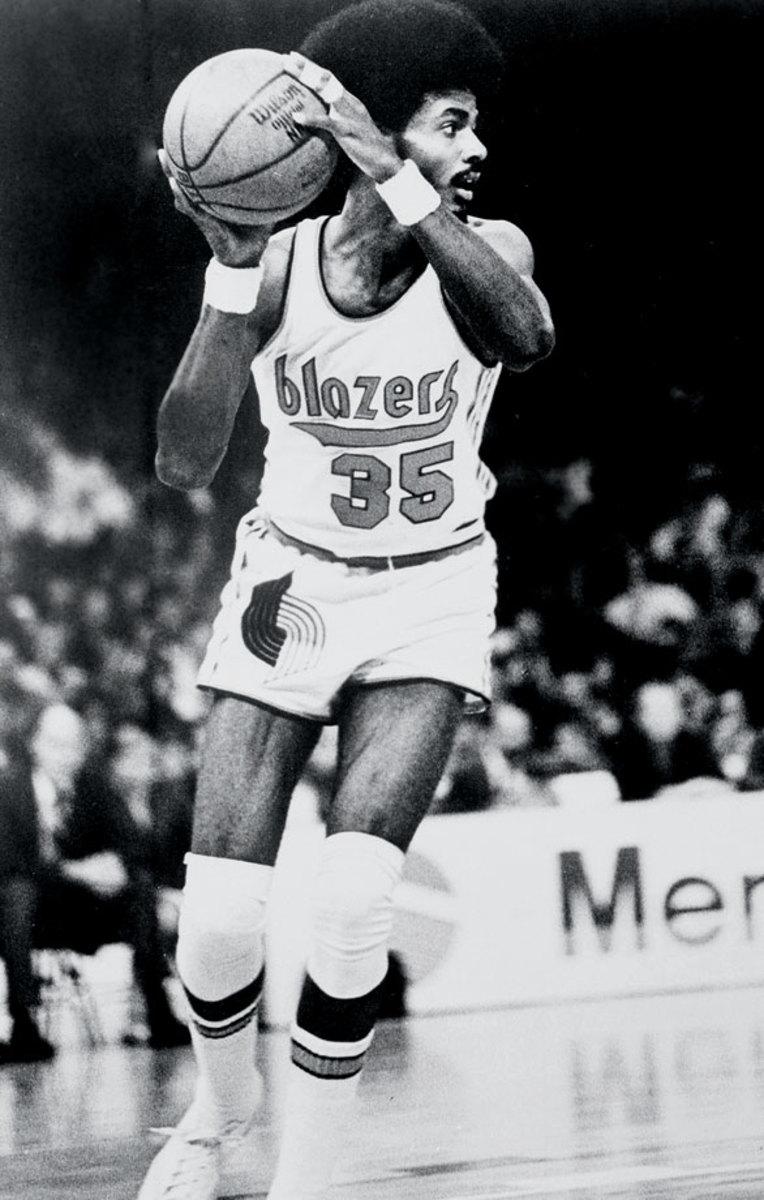
Portland passed on future Hall of Famer Bob McAdoo to take fellow big man Martin, who never averaged more than seven points in his four NBA seasons. The Loyola product retired in 1976, a year before the Blazers won their first and only championship.
Ken Durrett, Cincinnati Royals | No. 4 pick, 1971
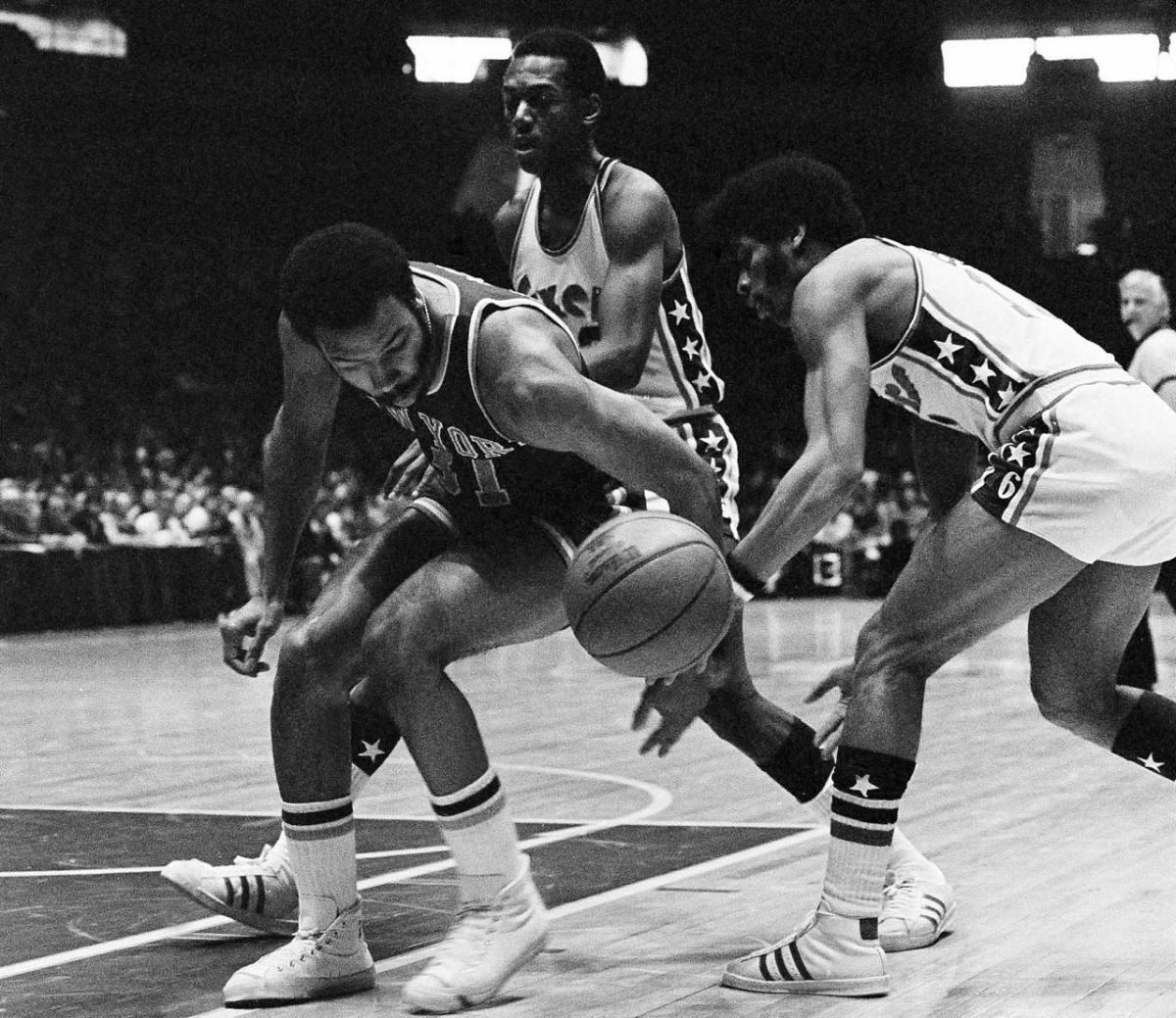
Durrett (pictured in the background, with the 76ers)) had more fouls (197) than field goals (192) in his four-year career, during which he averaged 10 minutes a game and never started.
